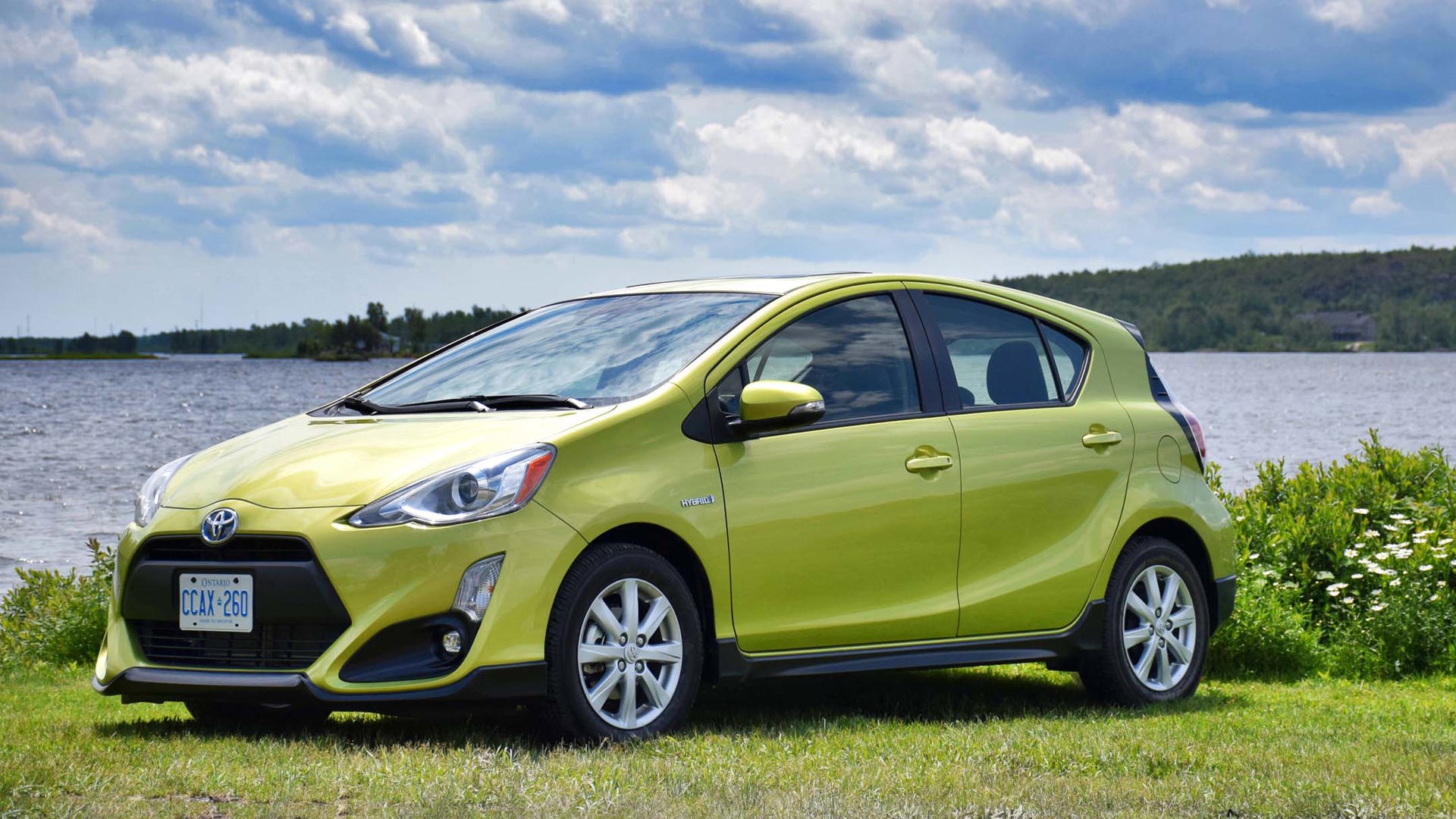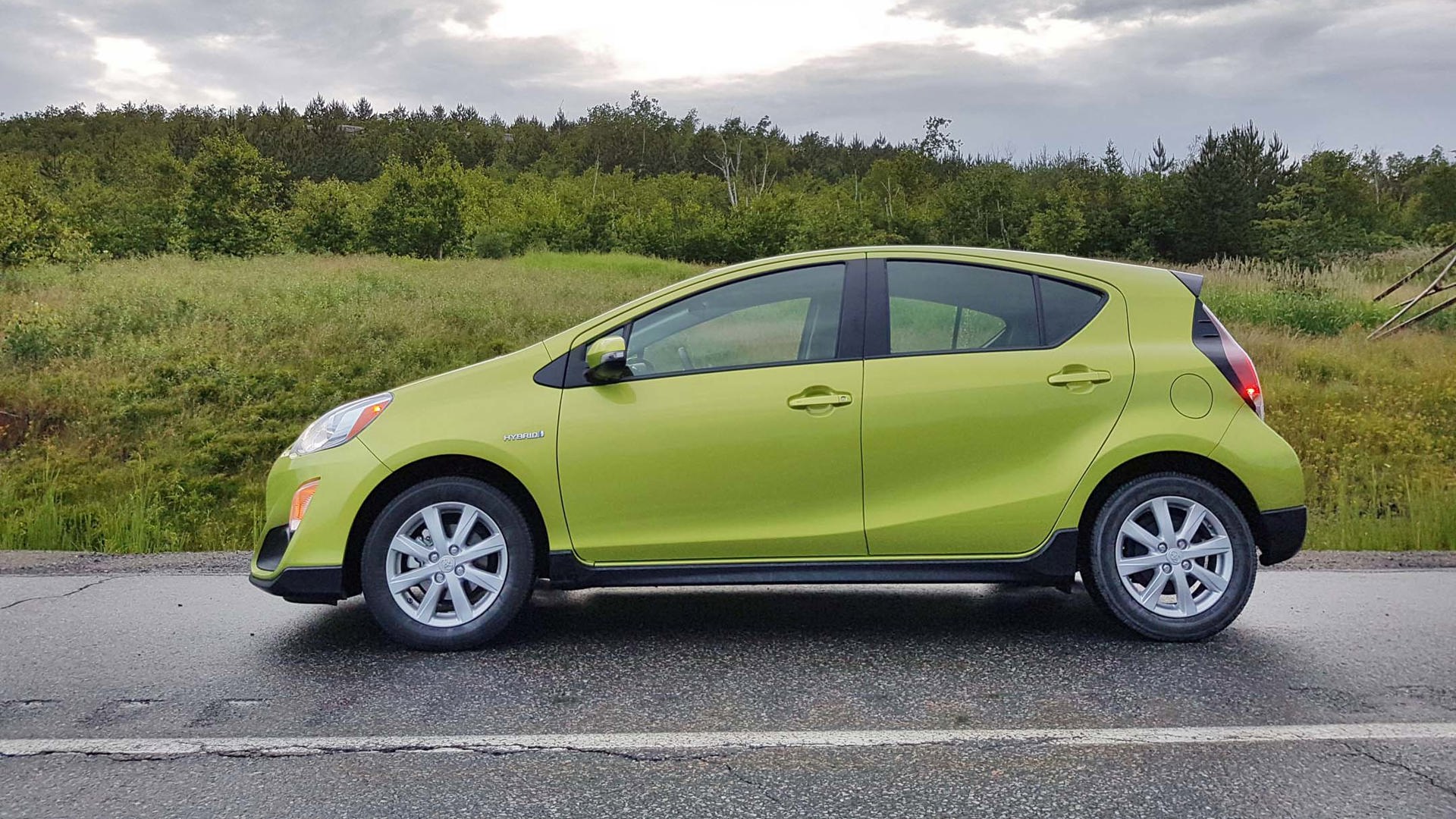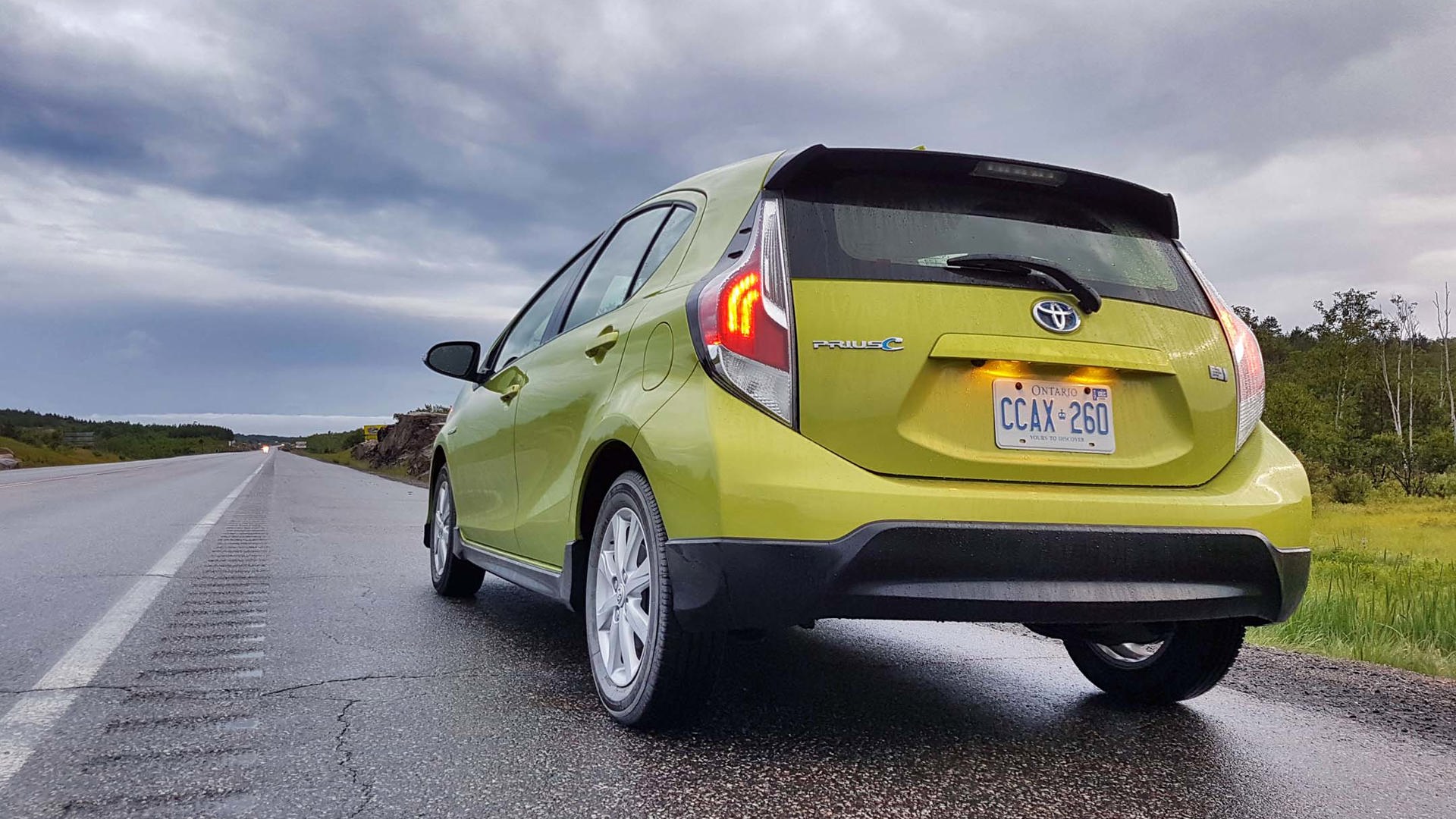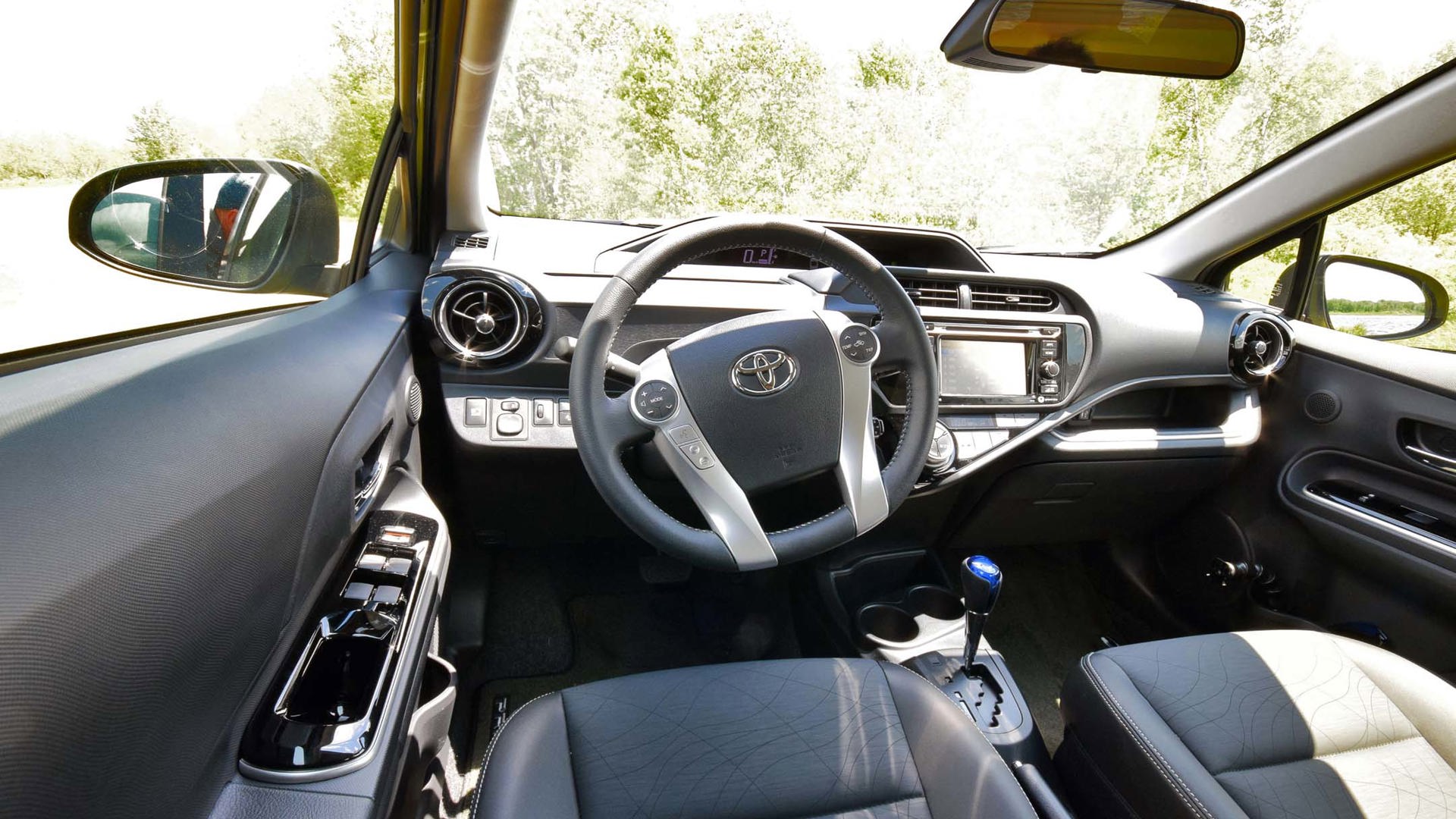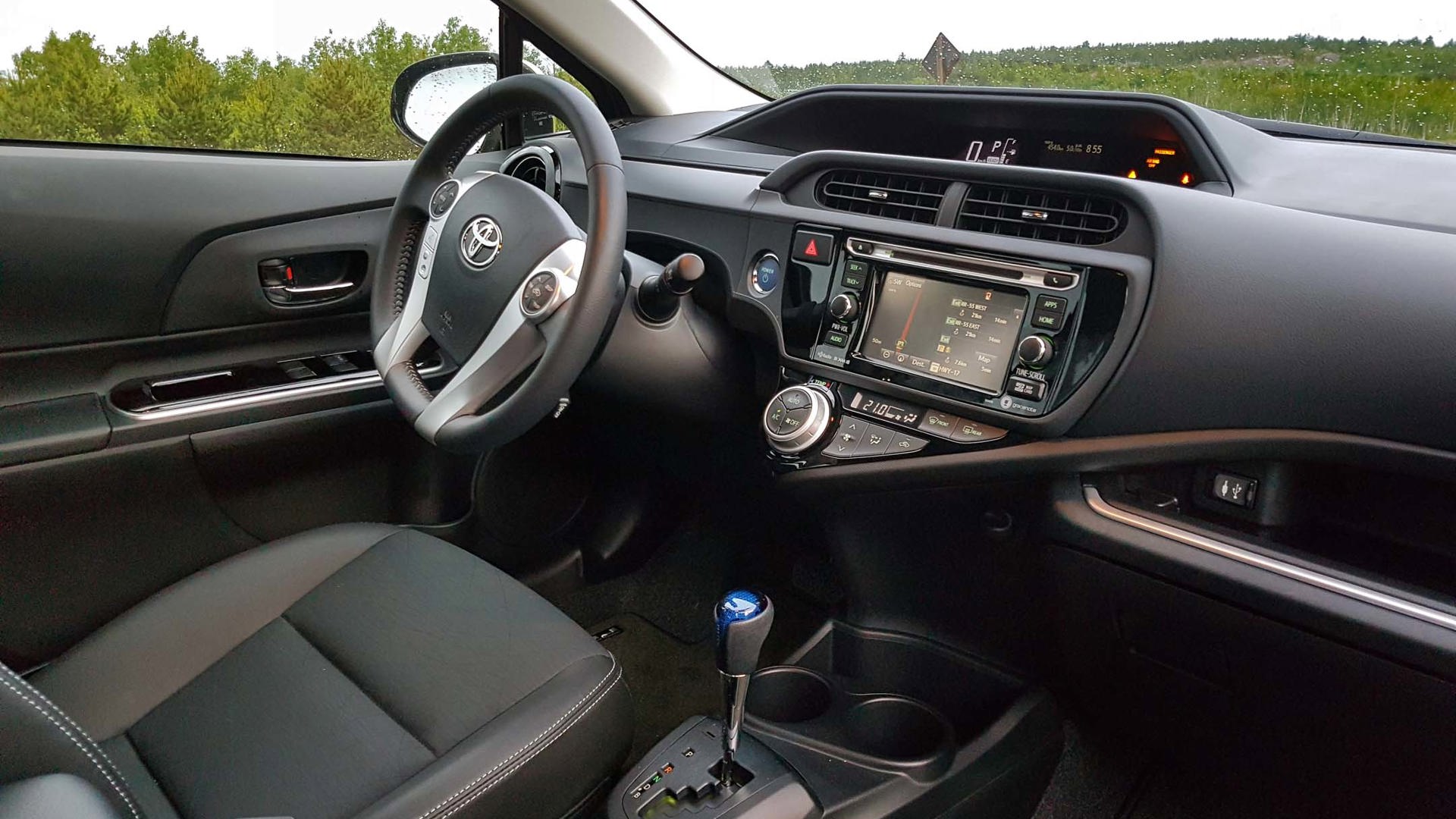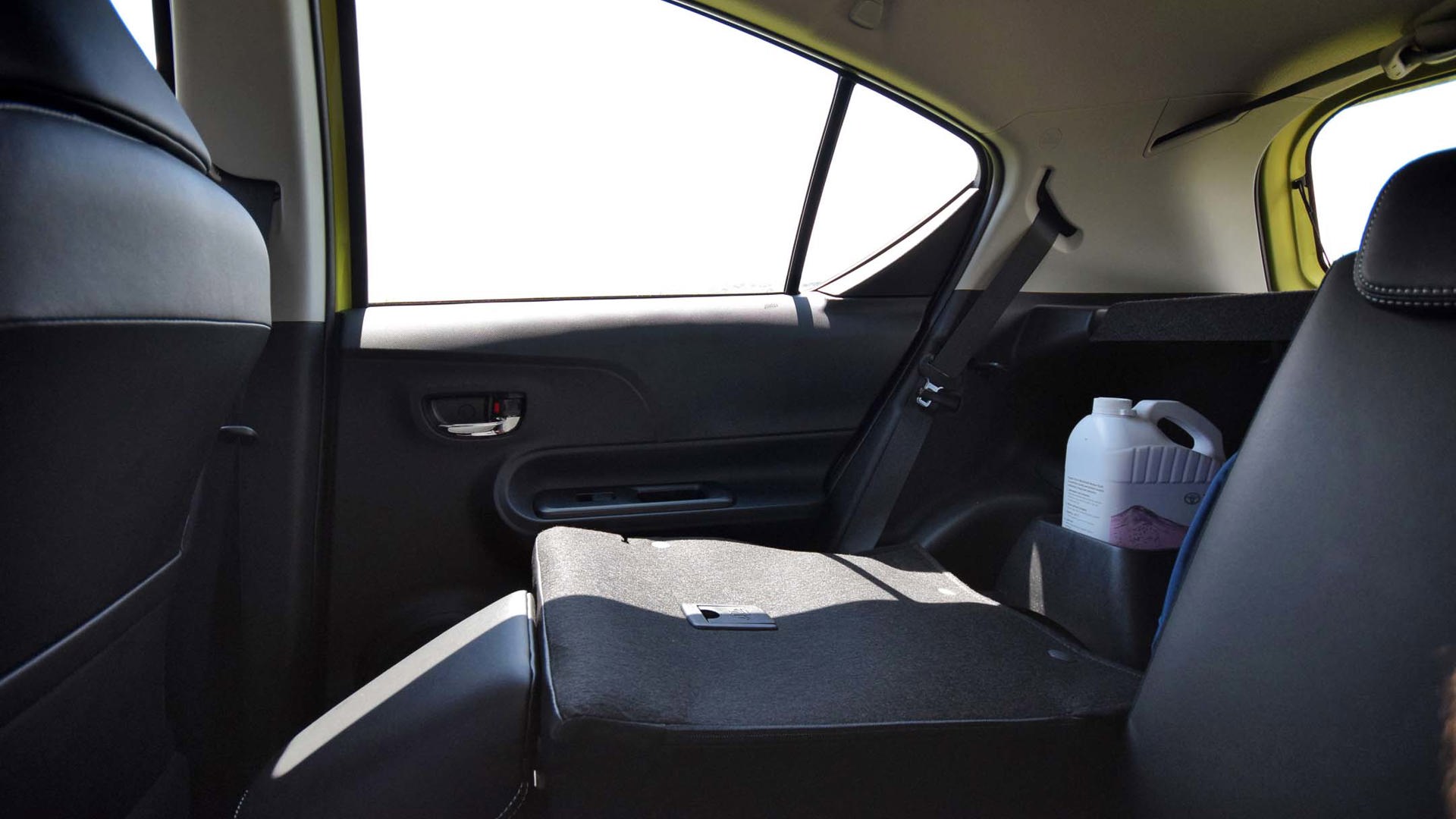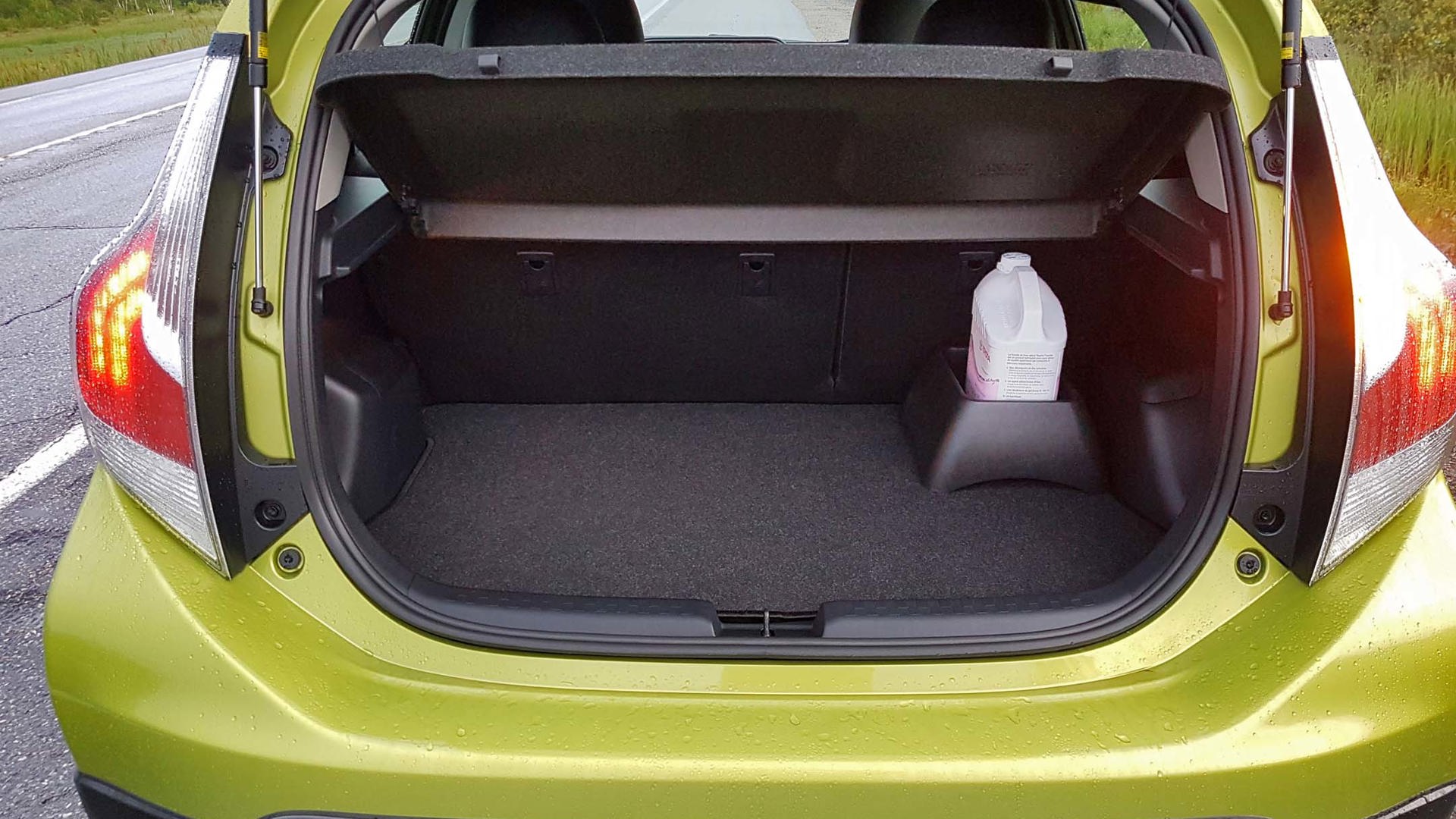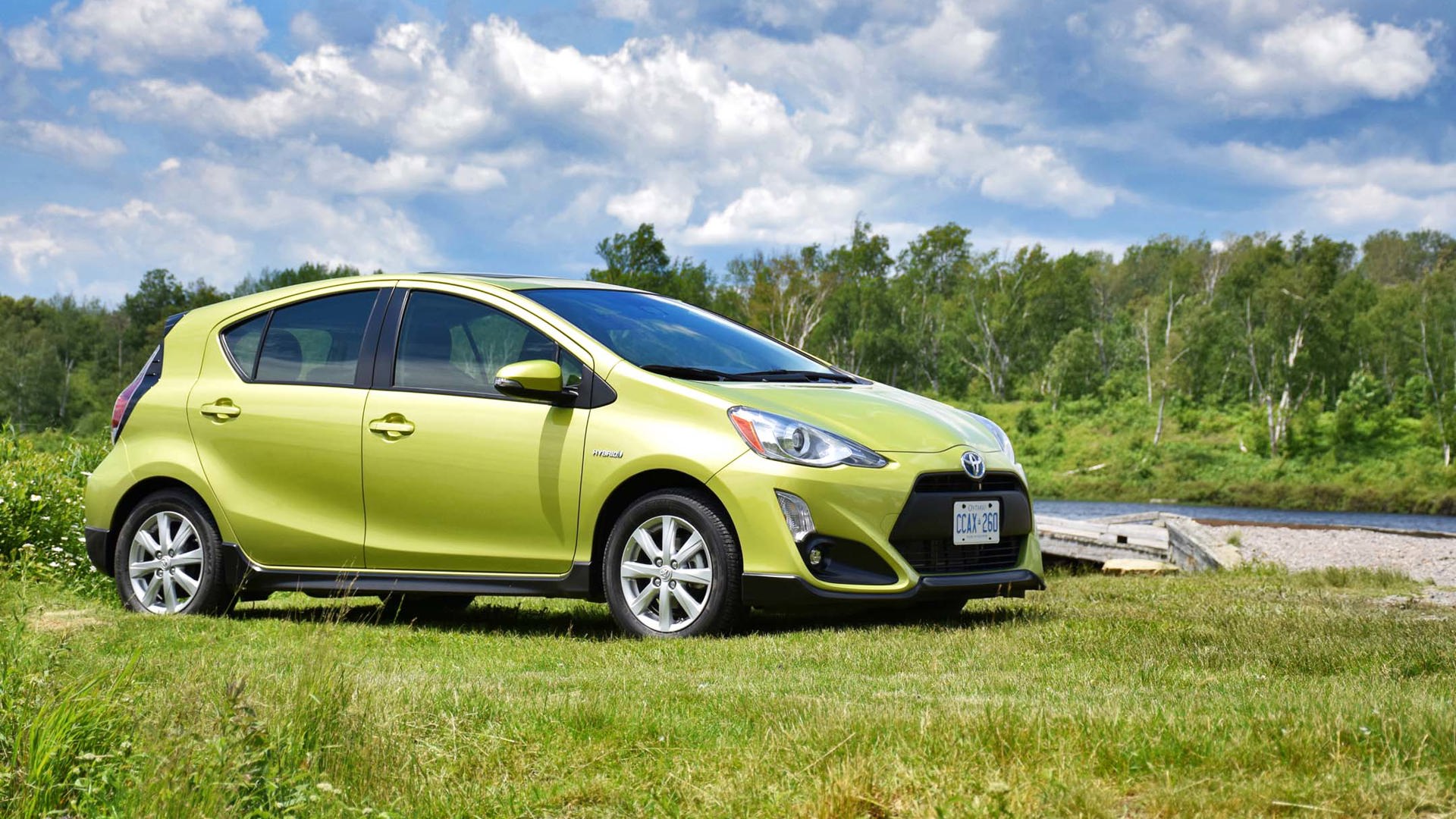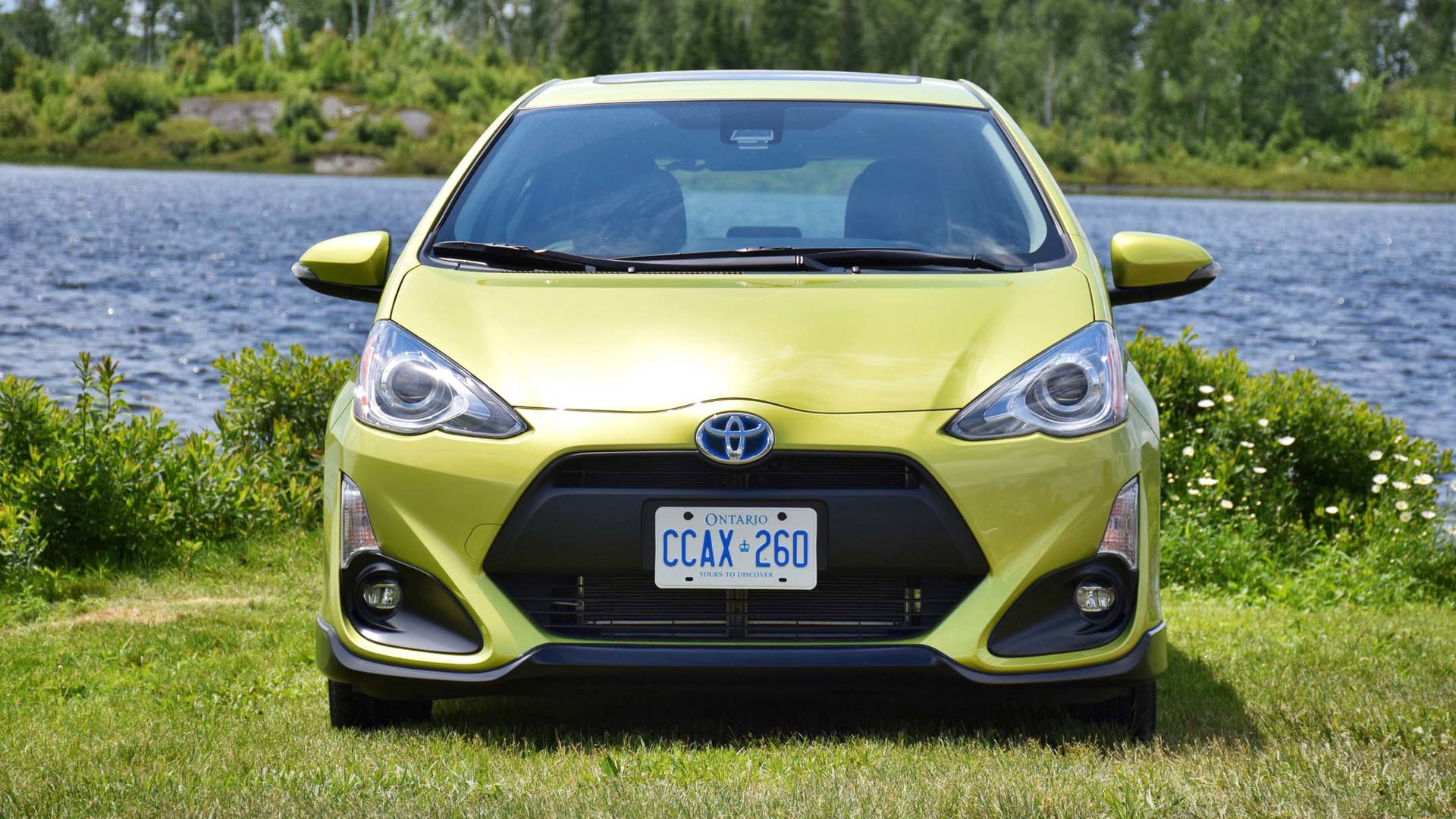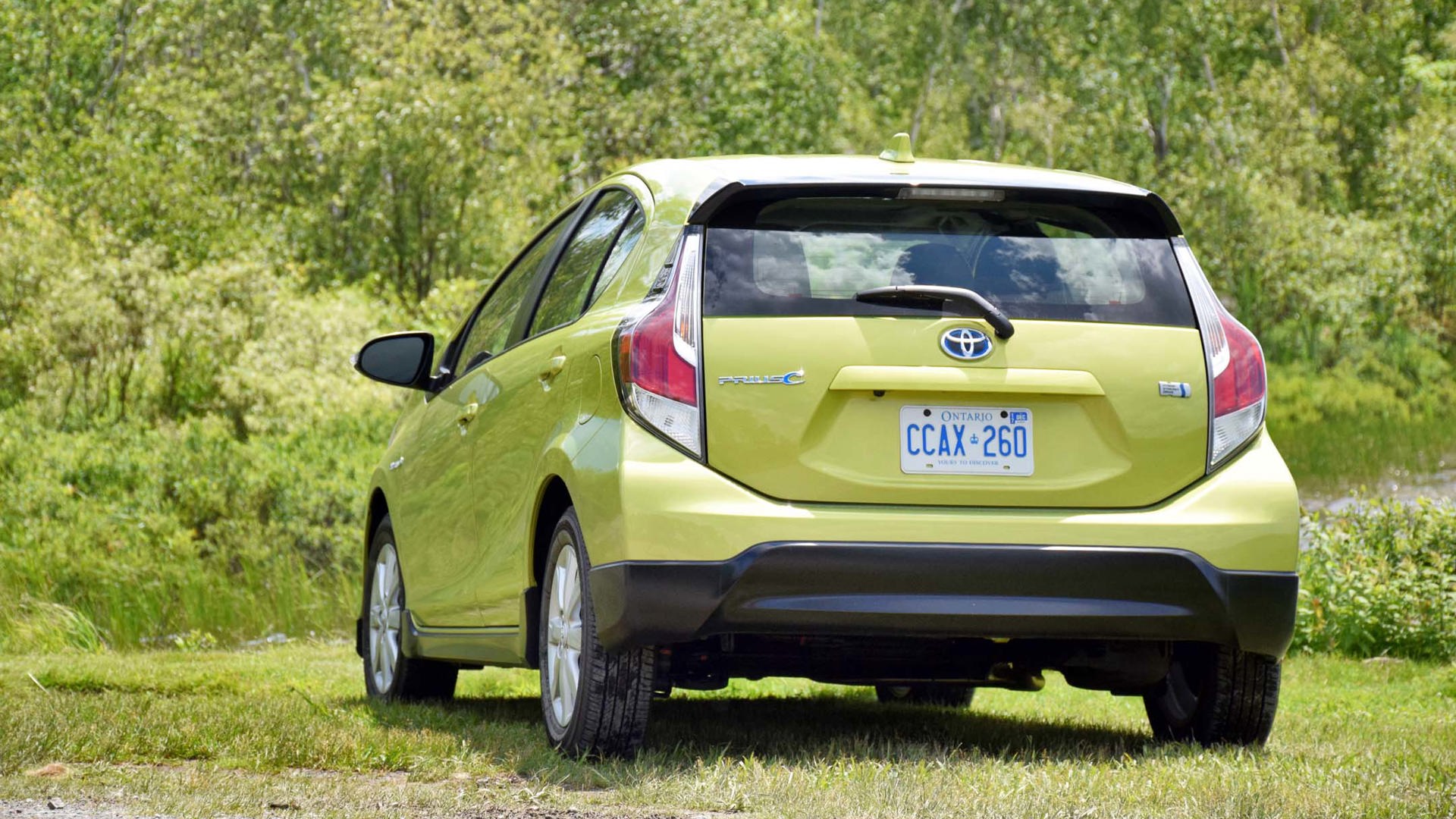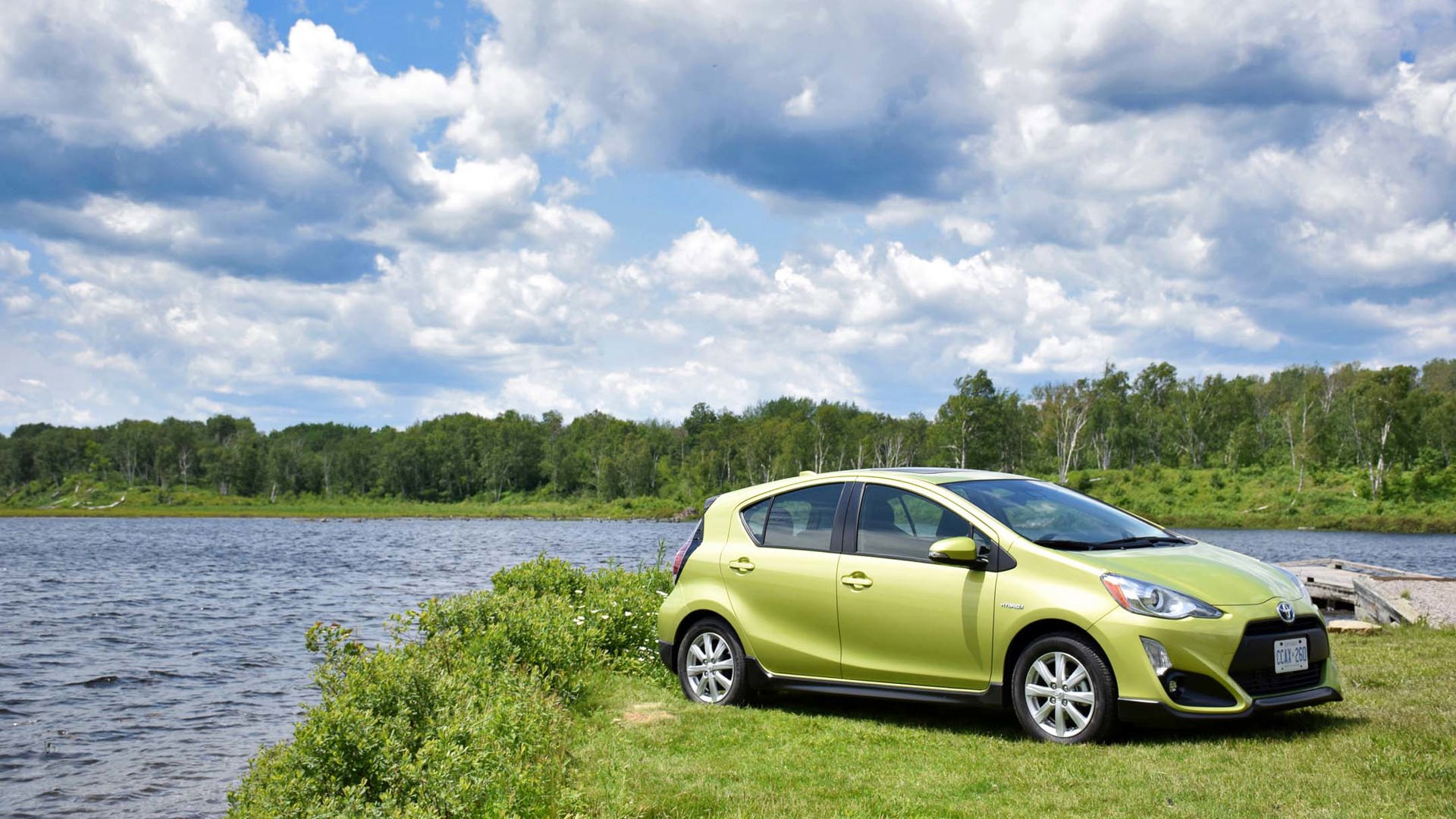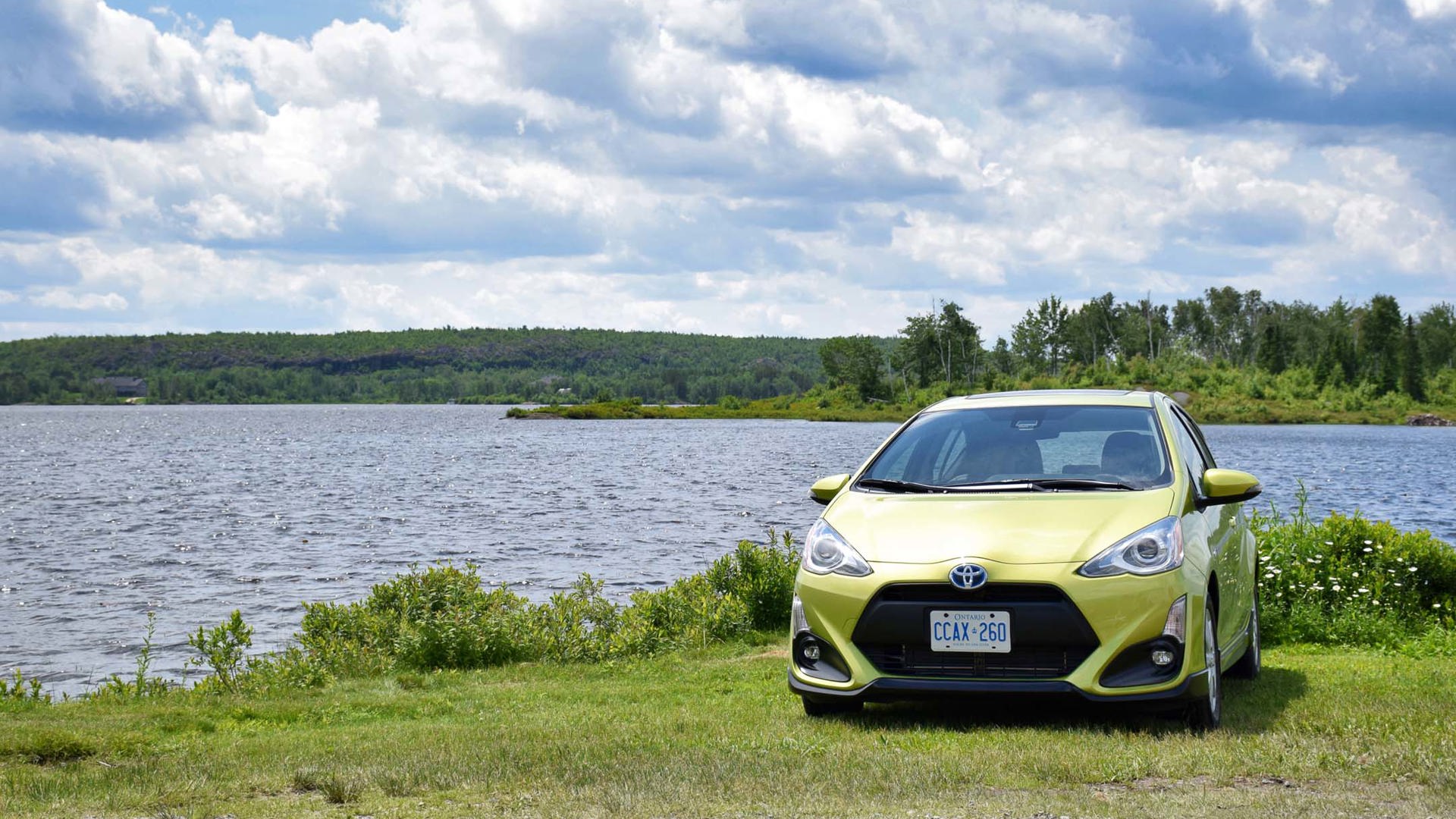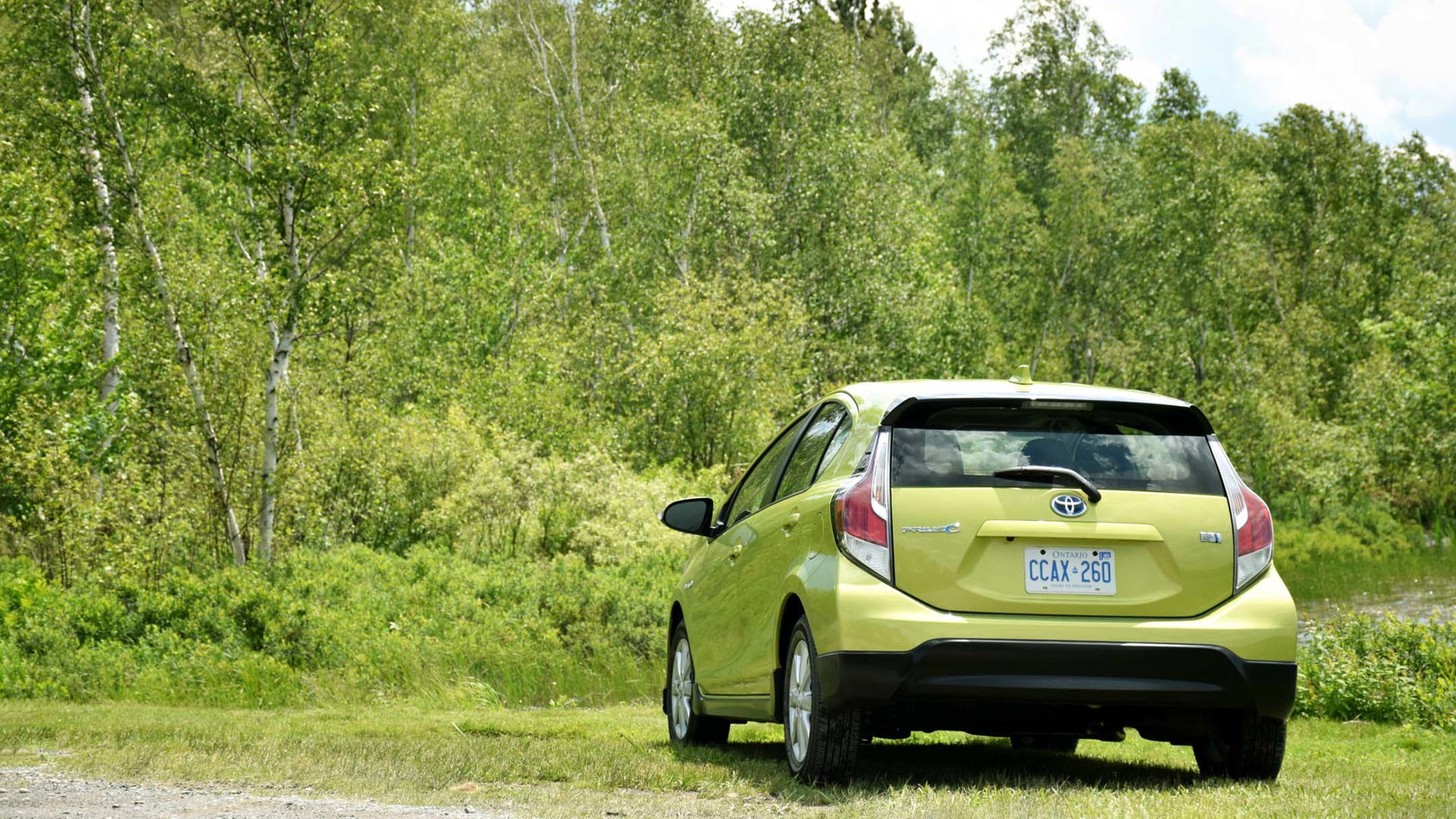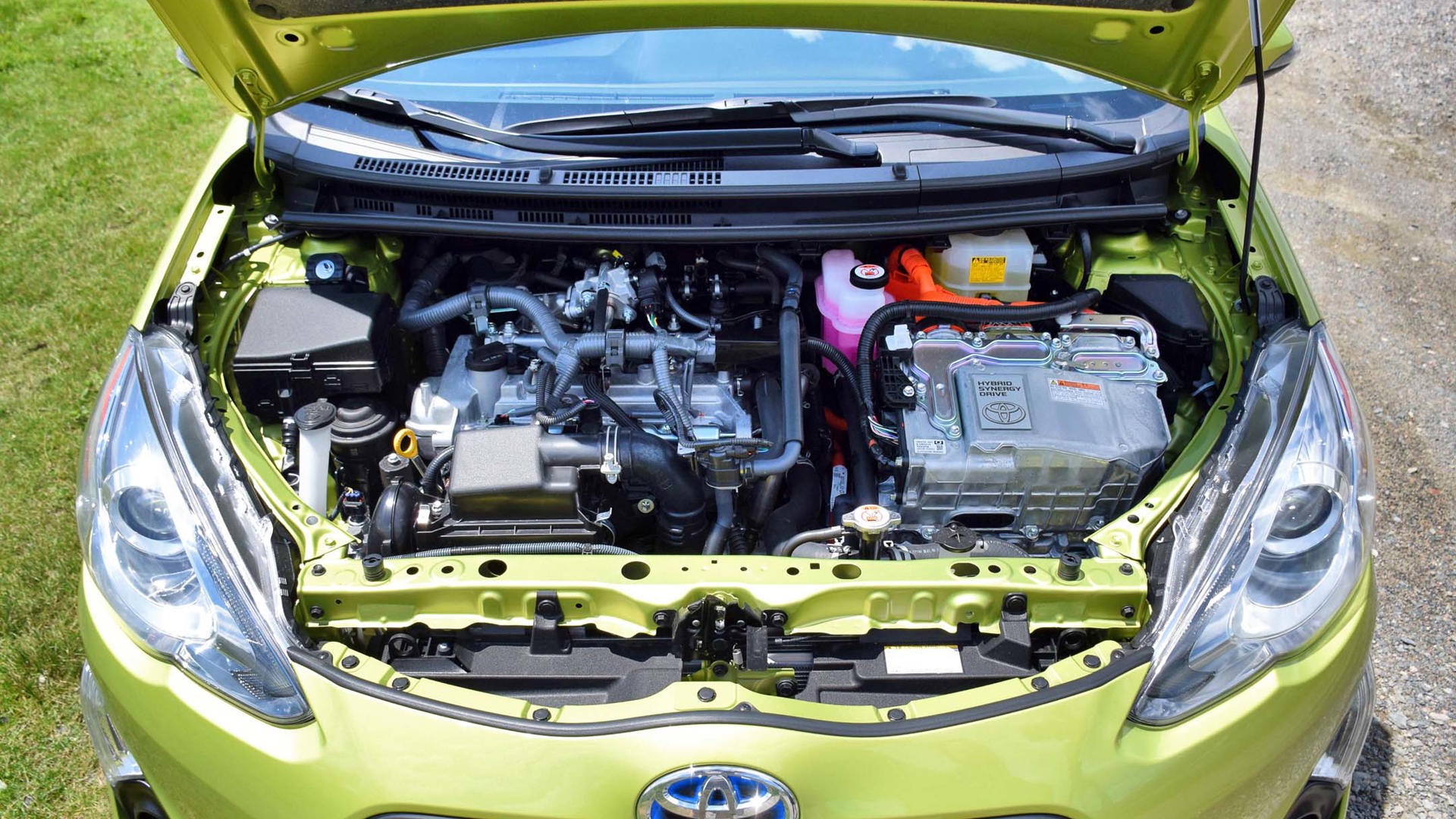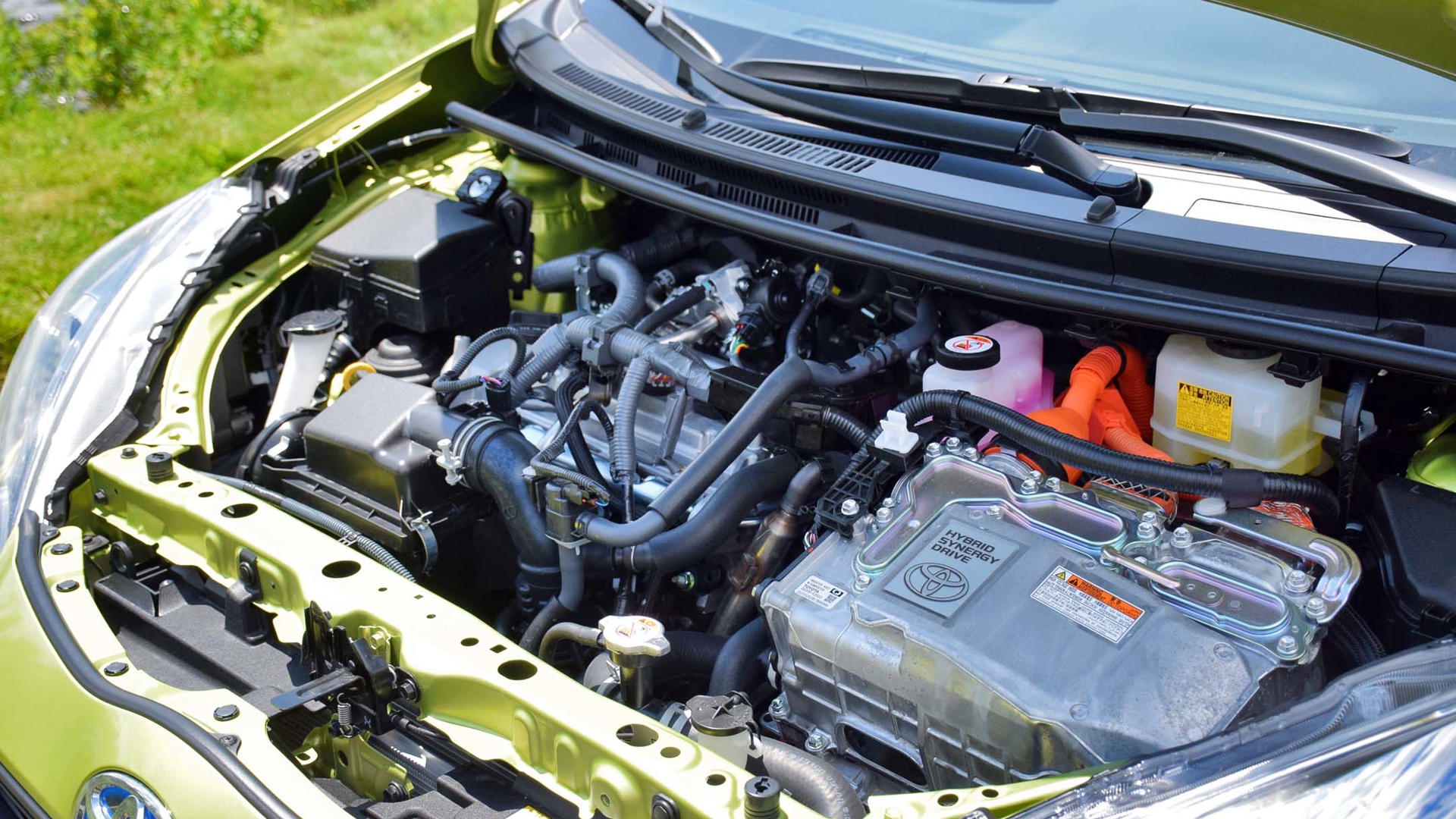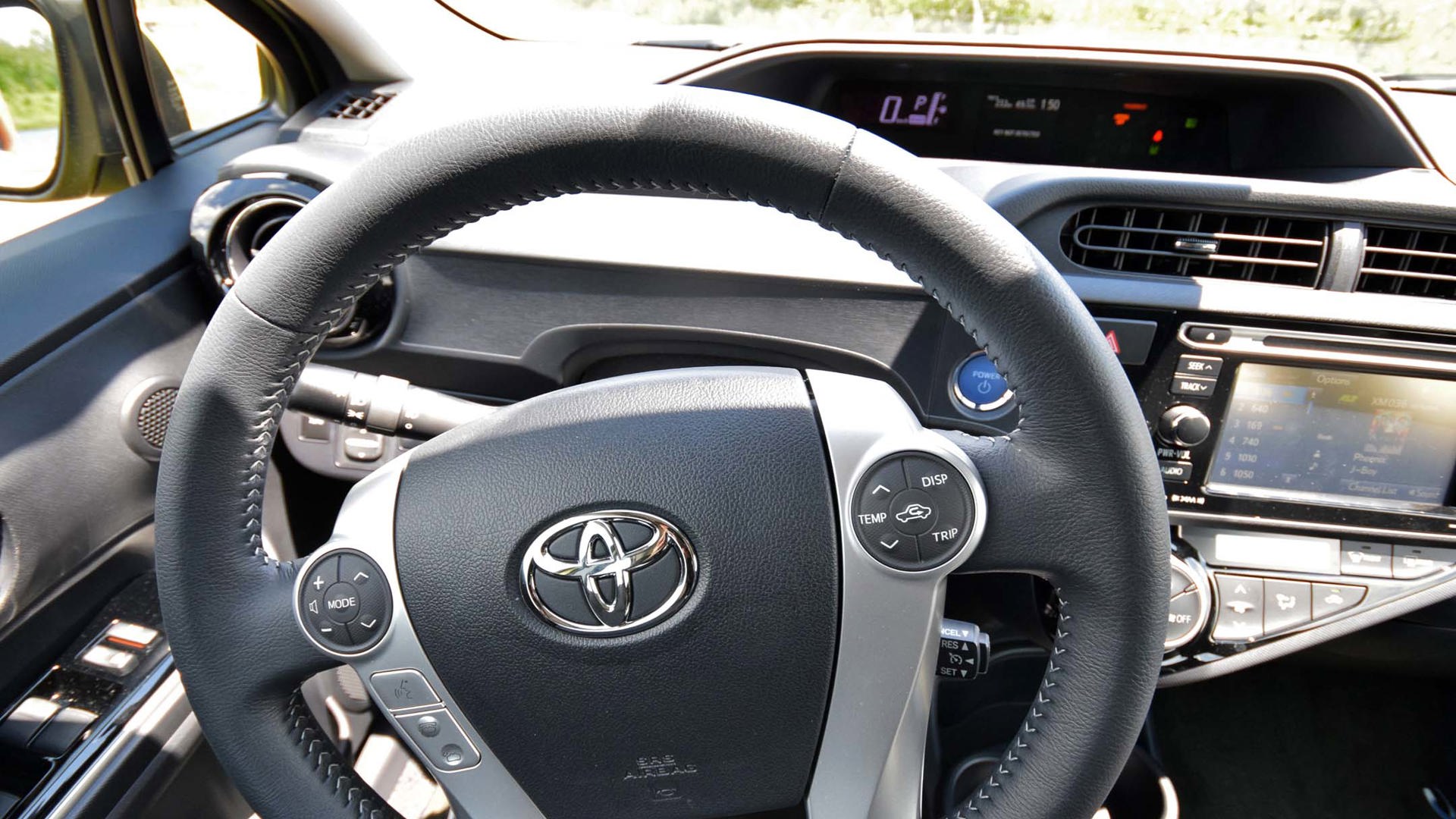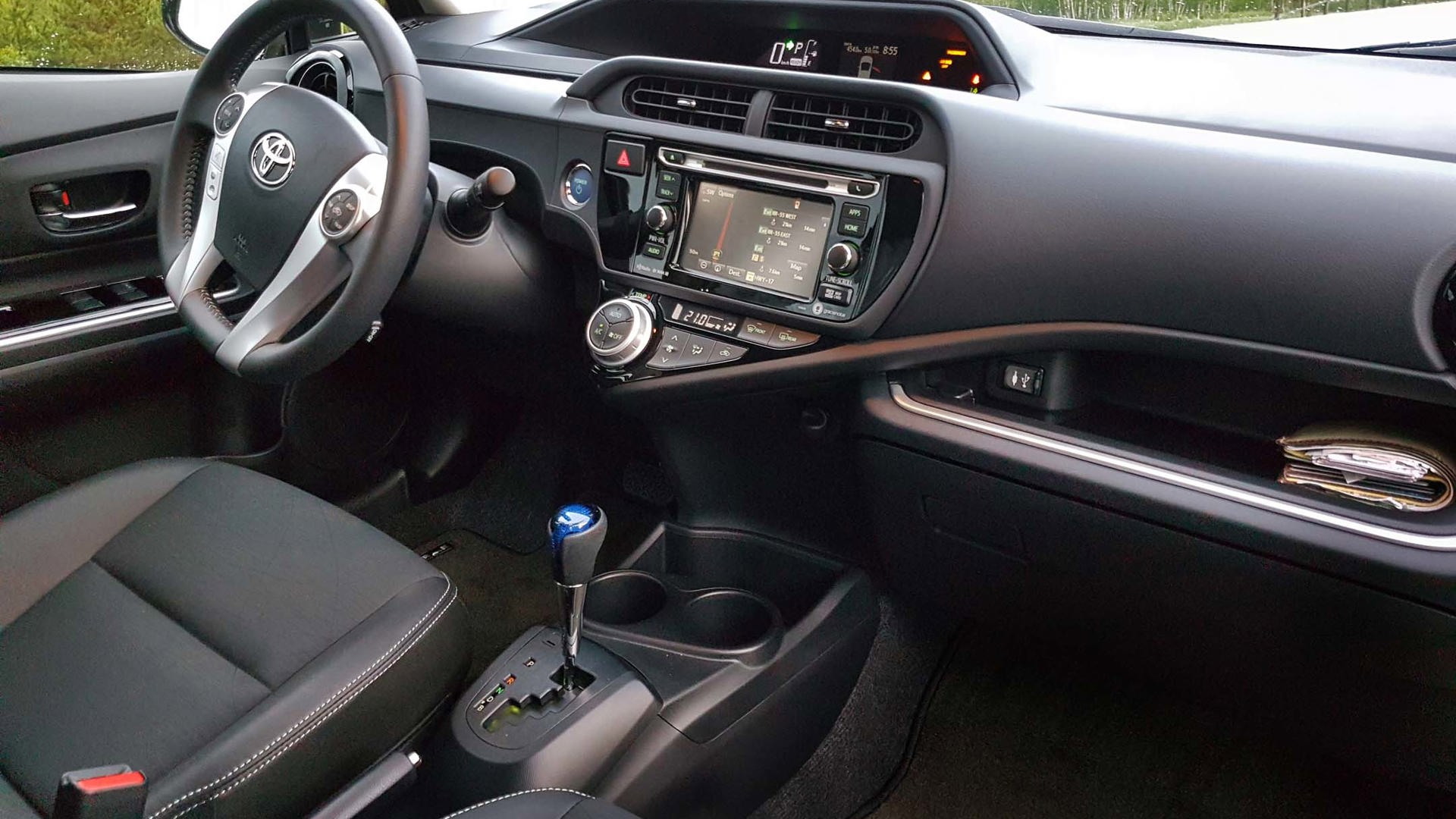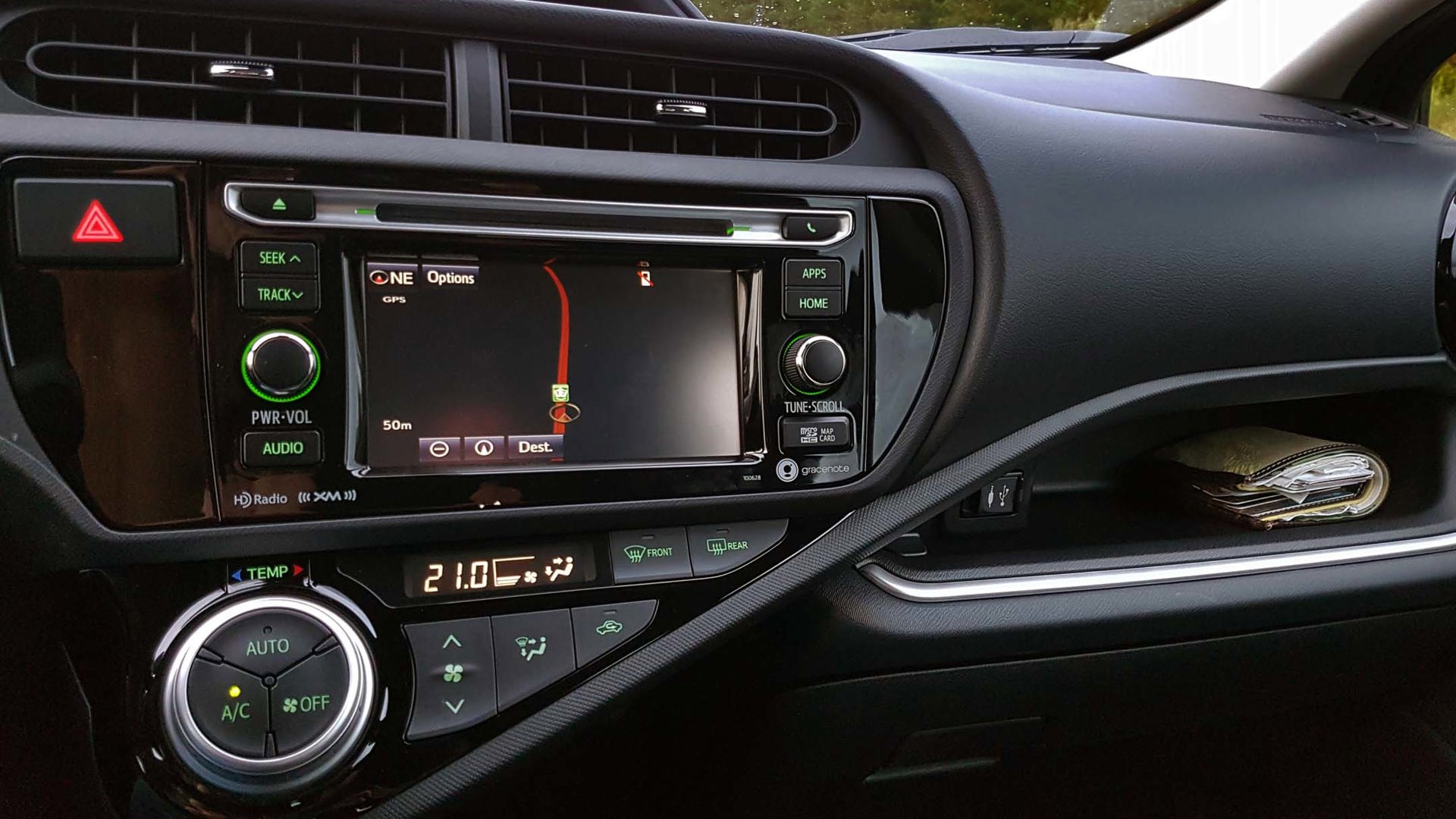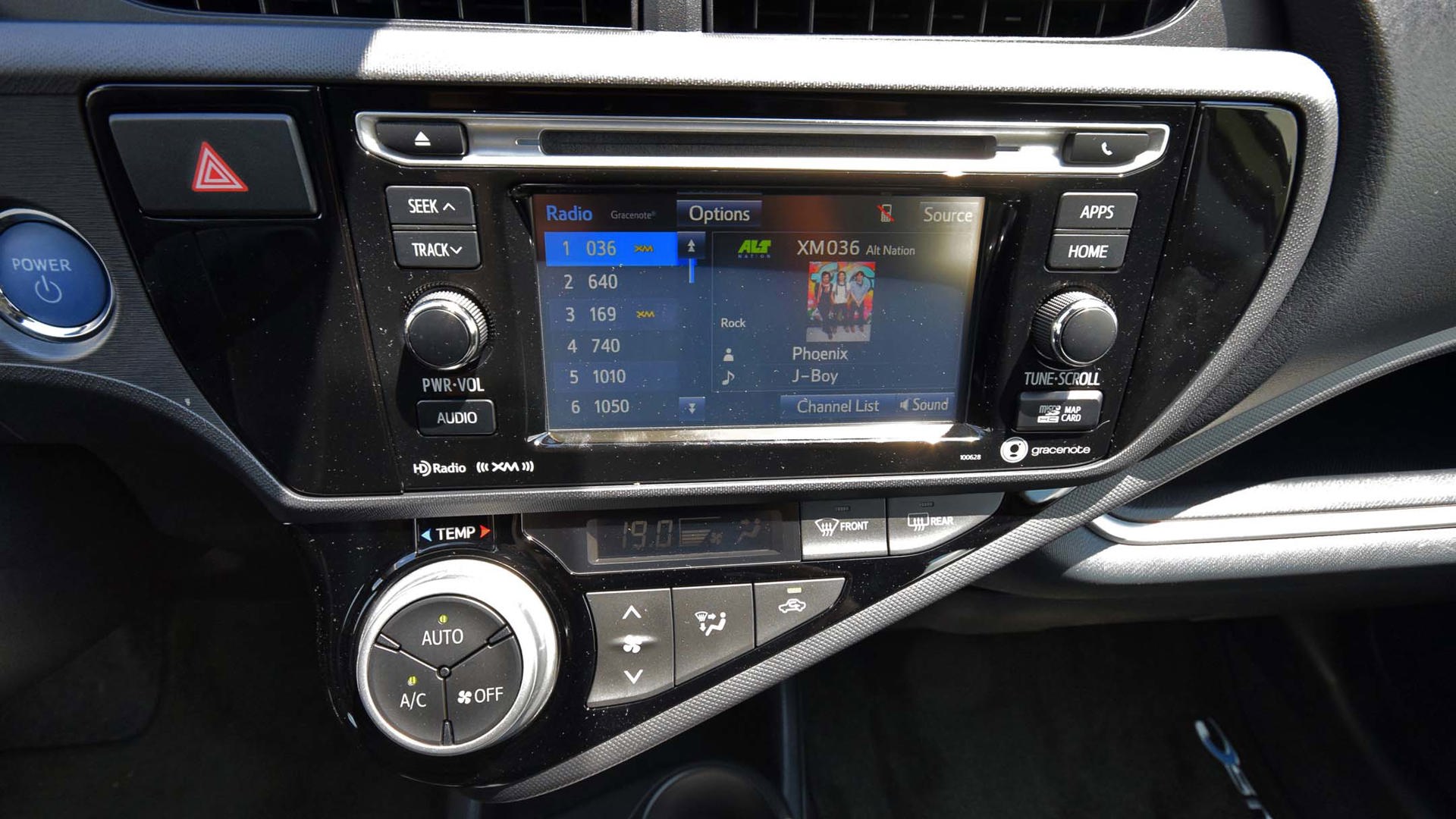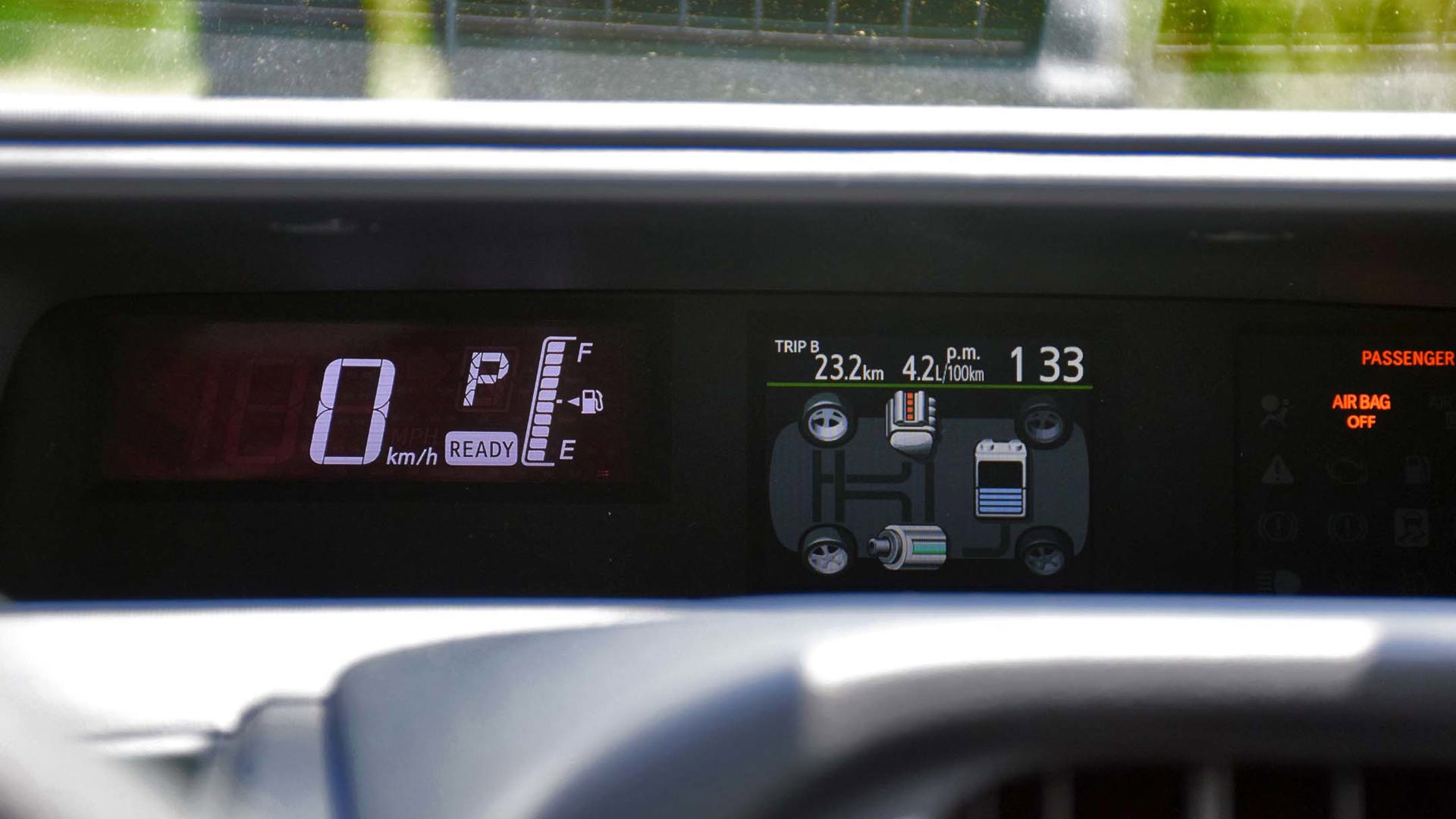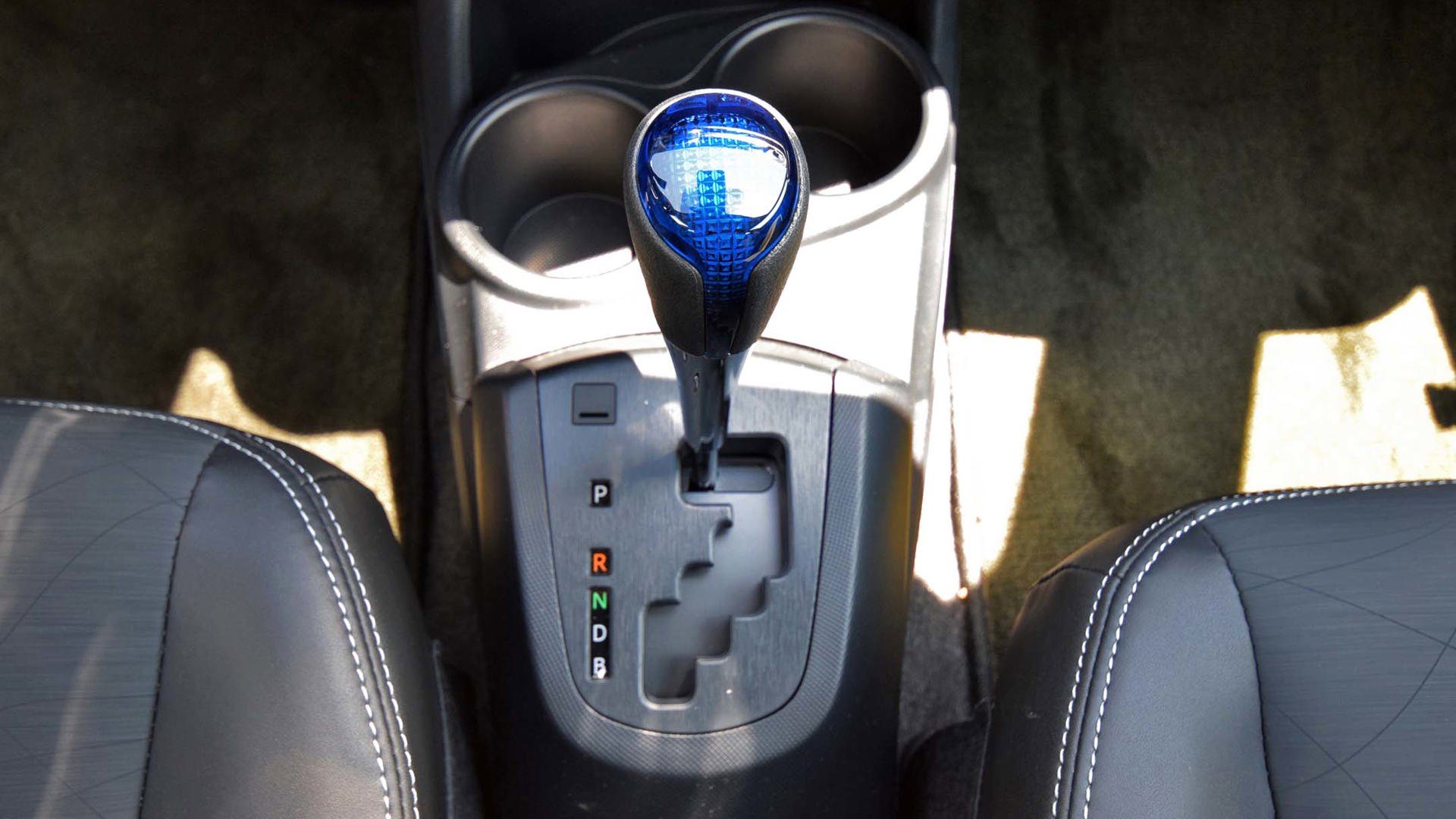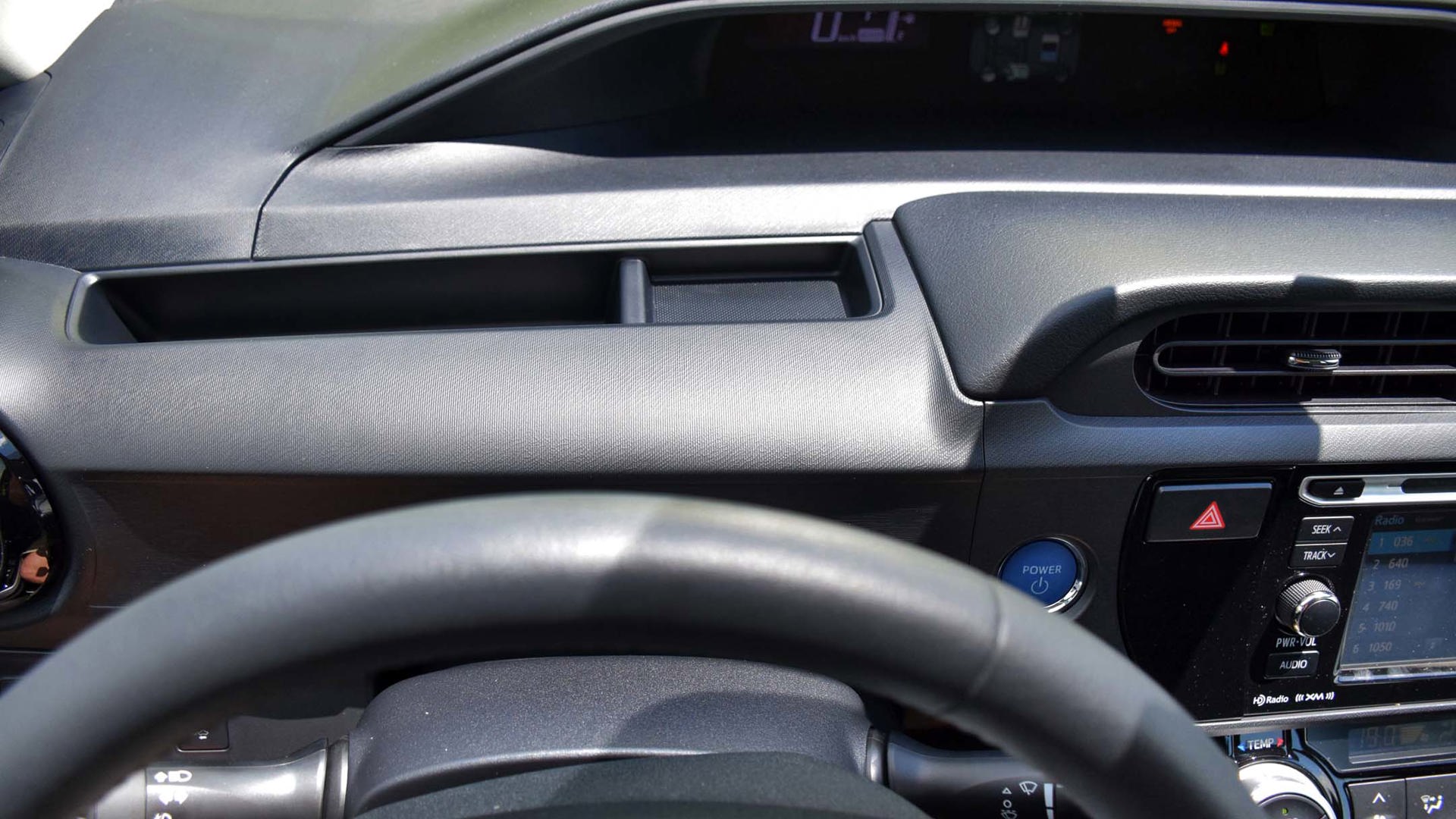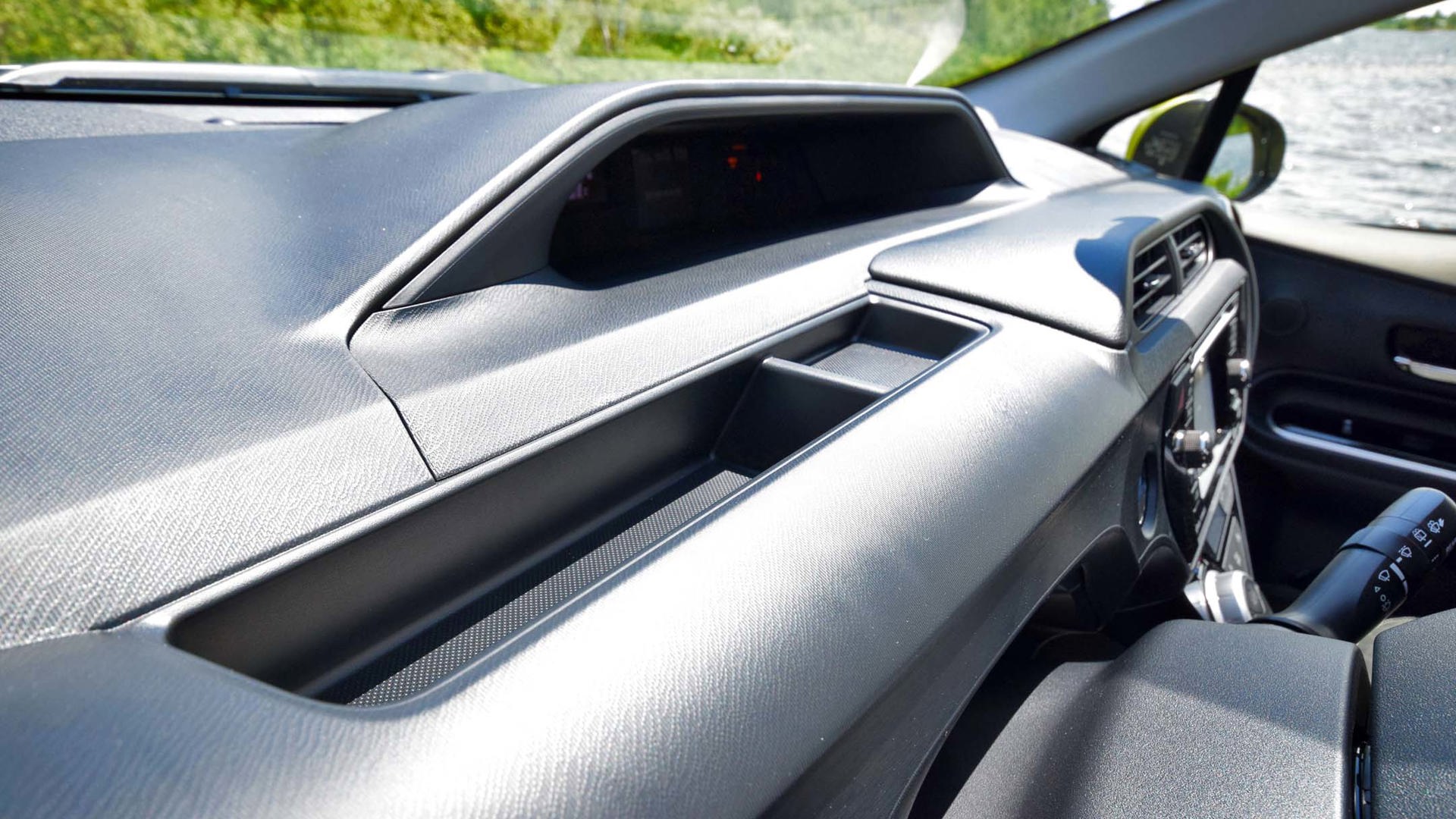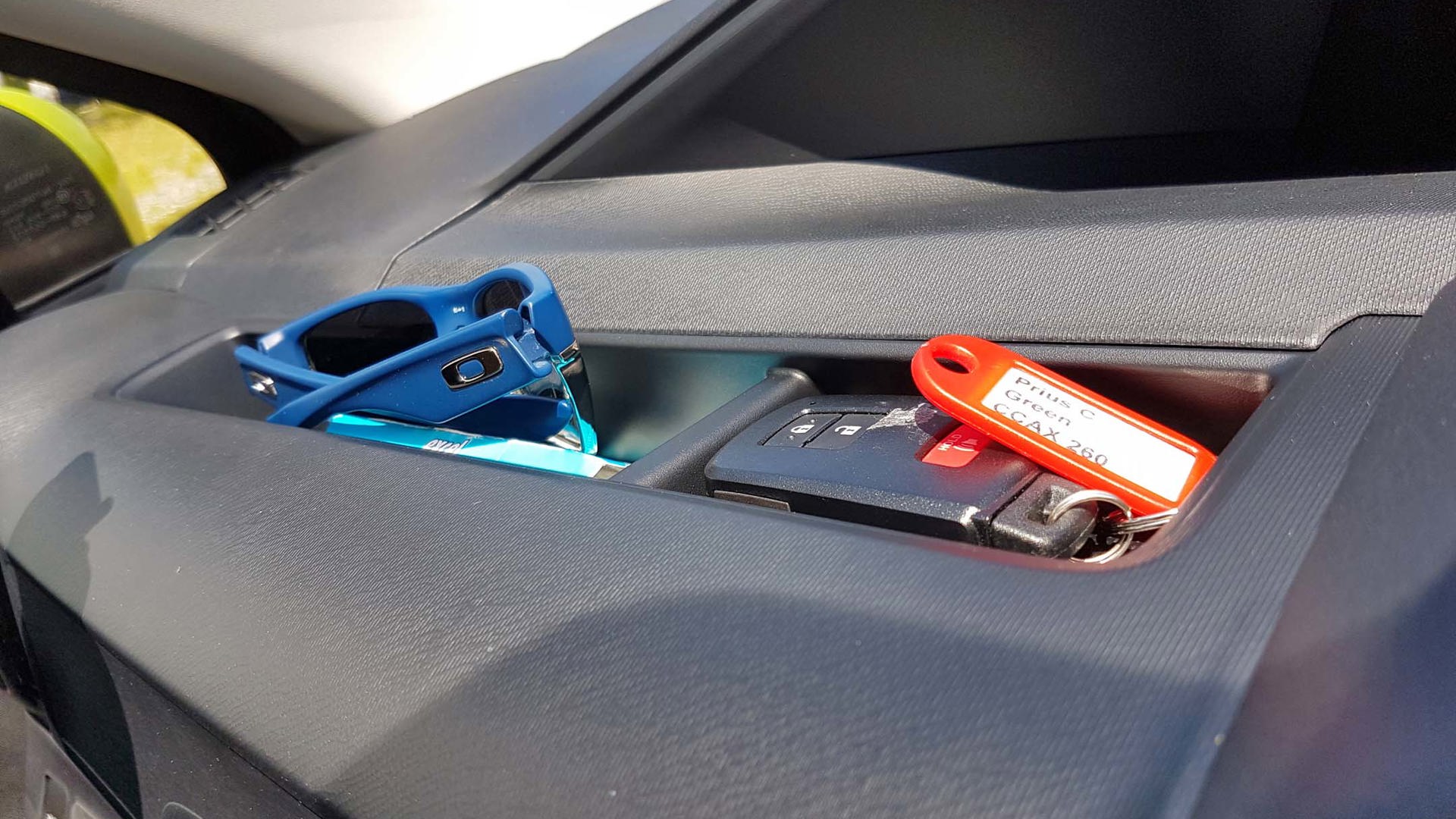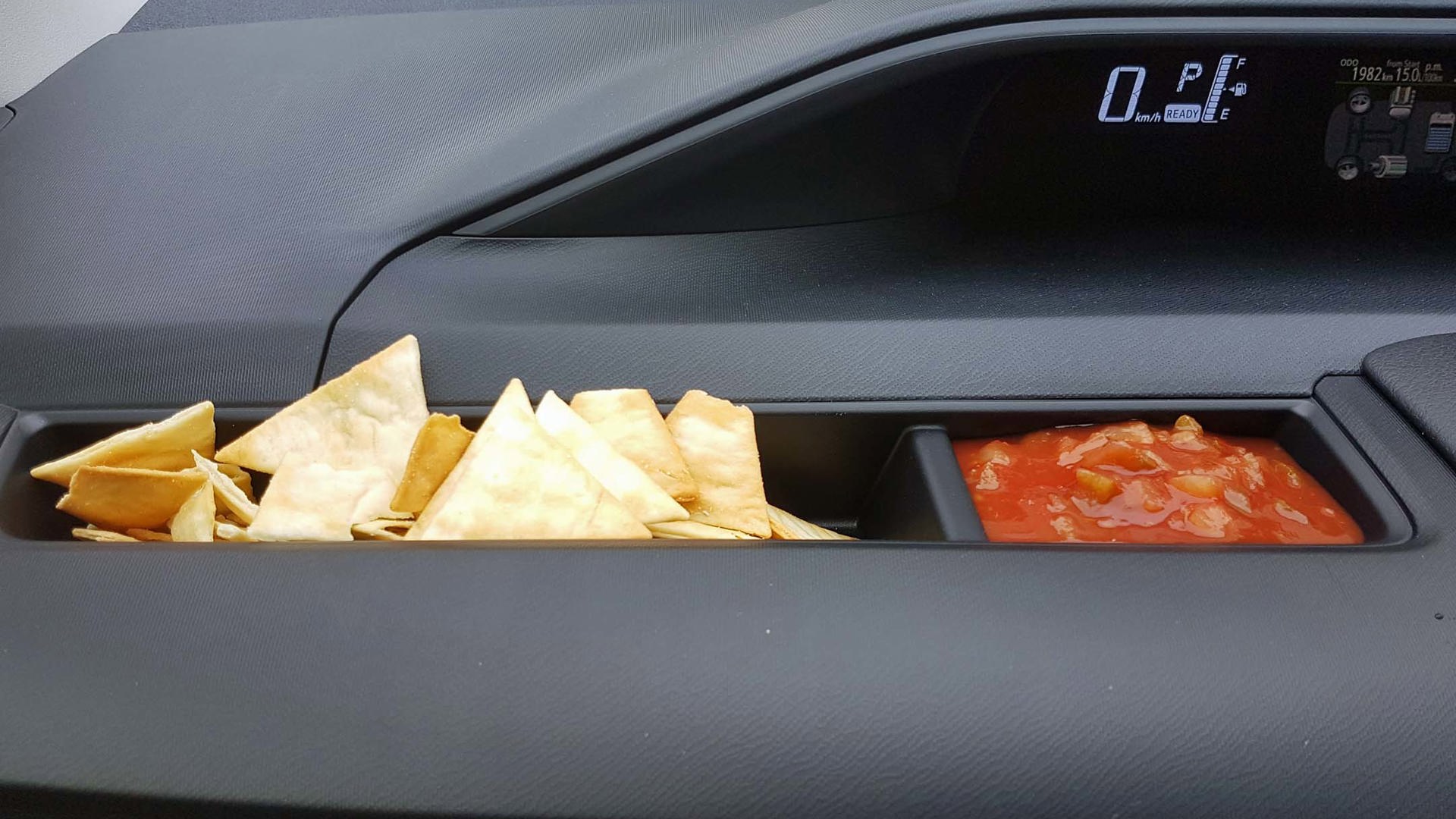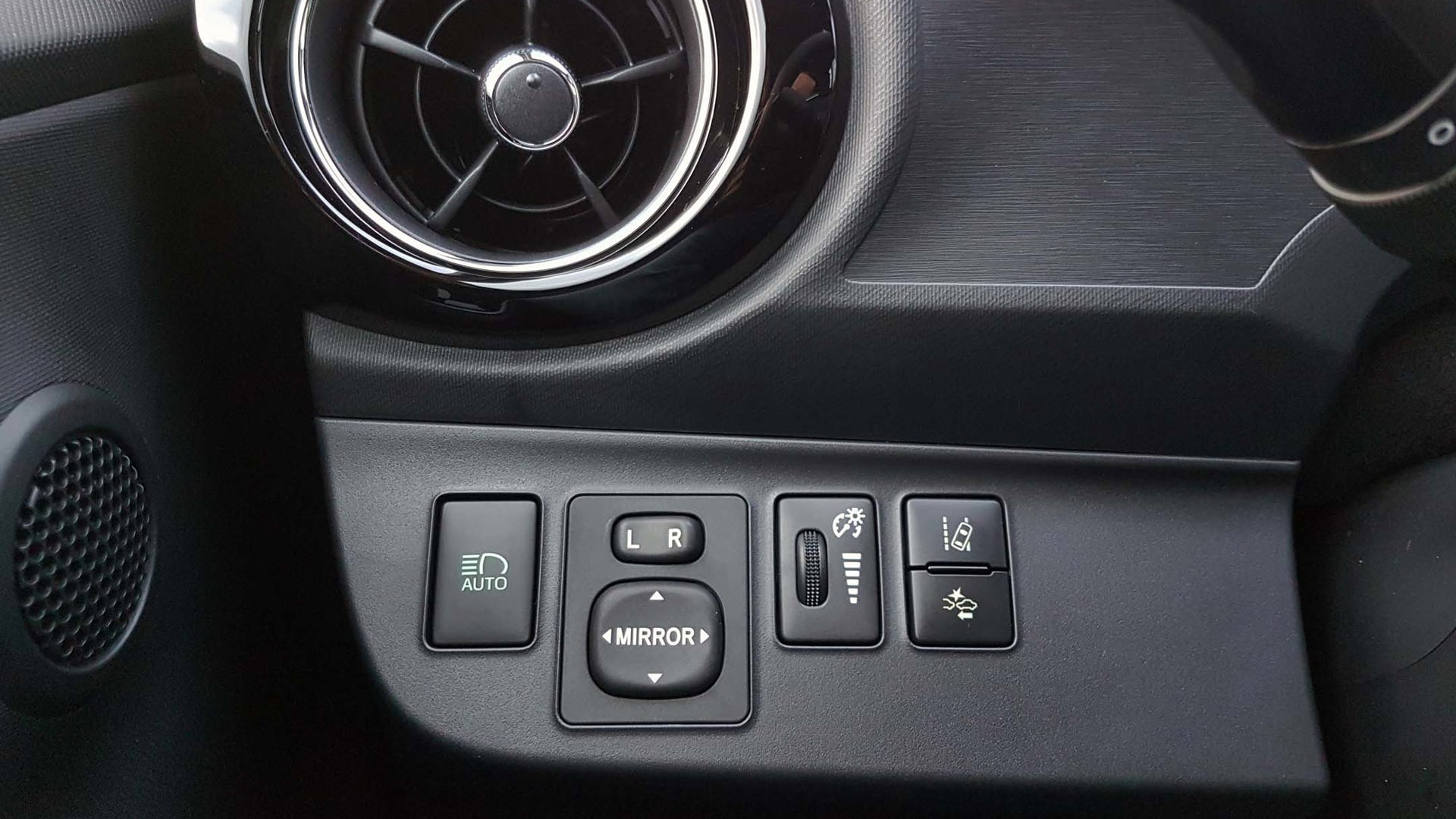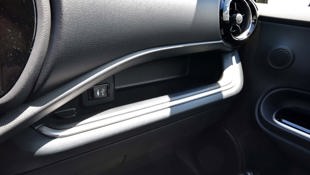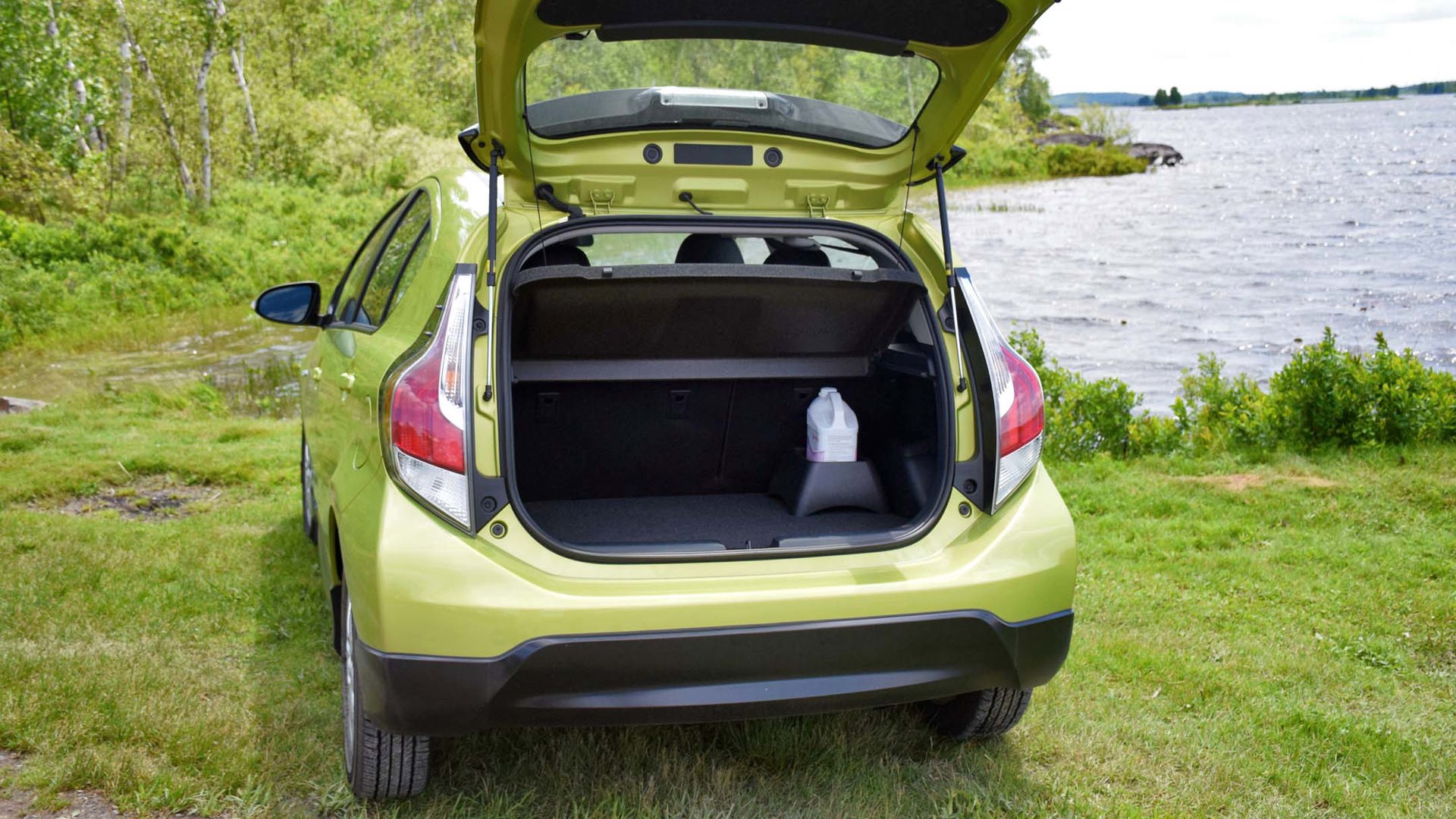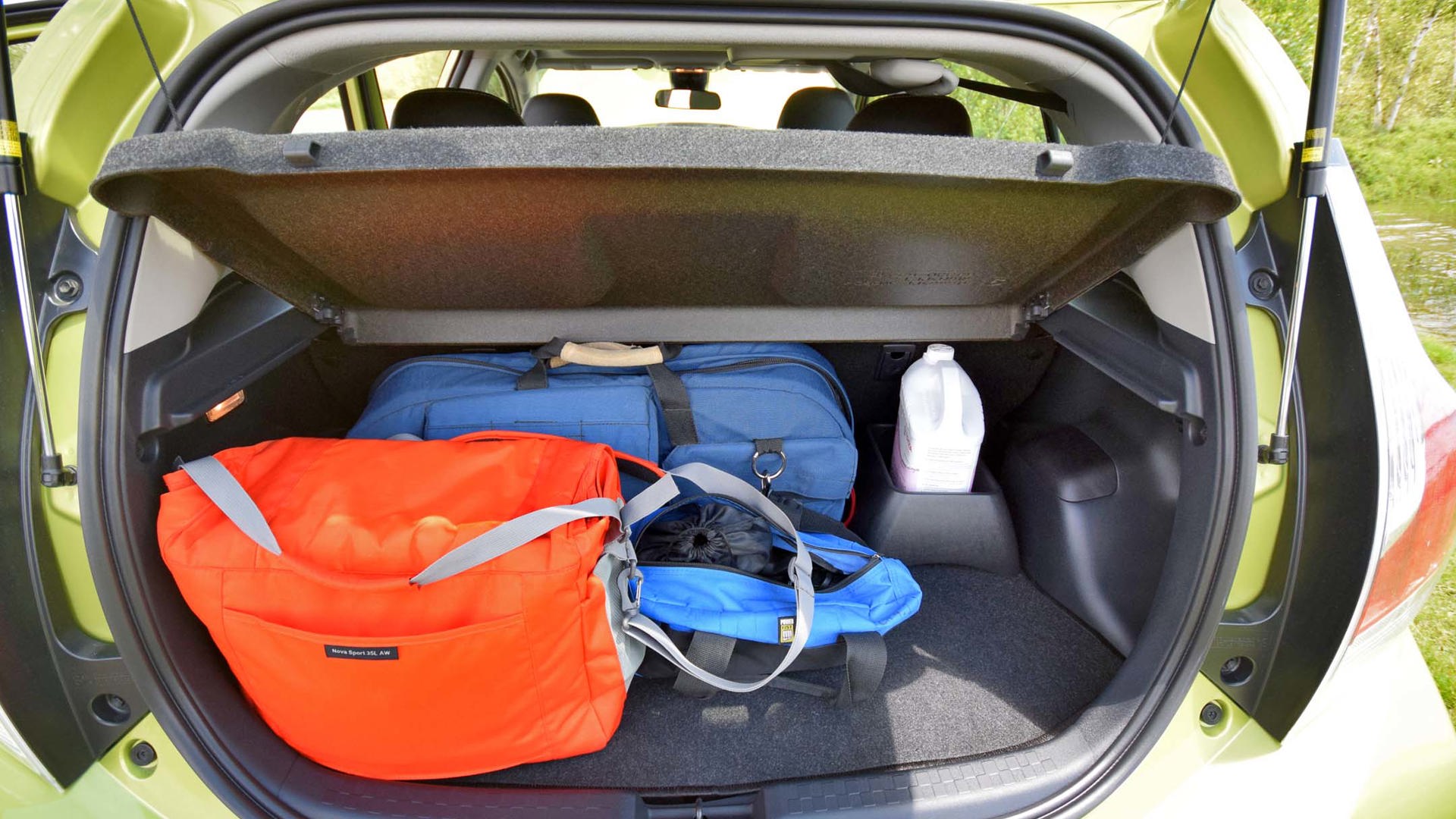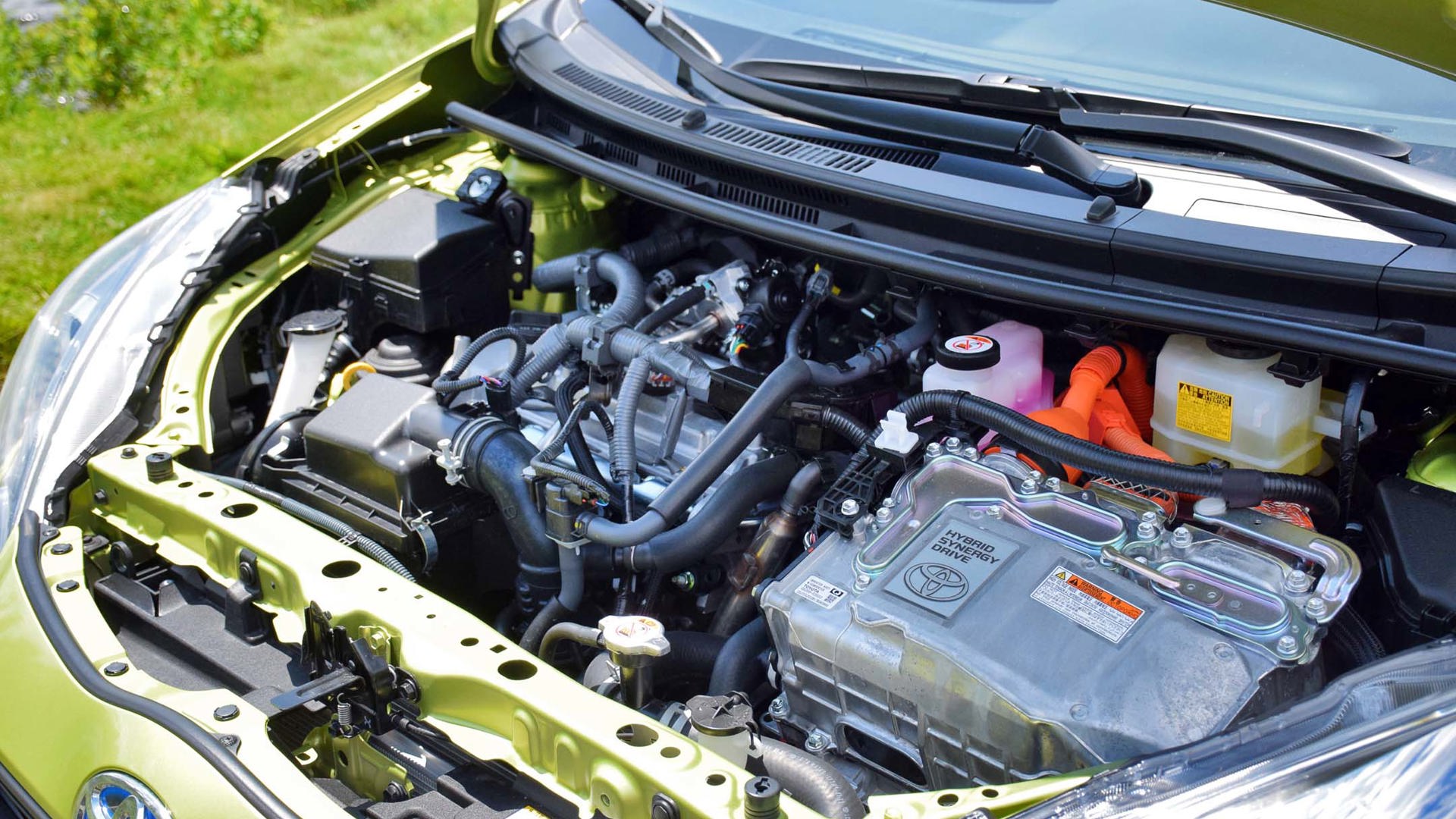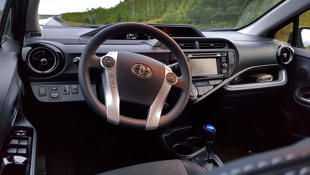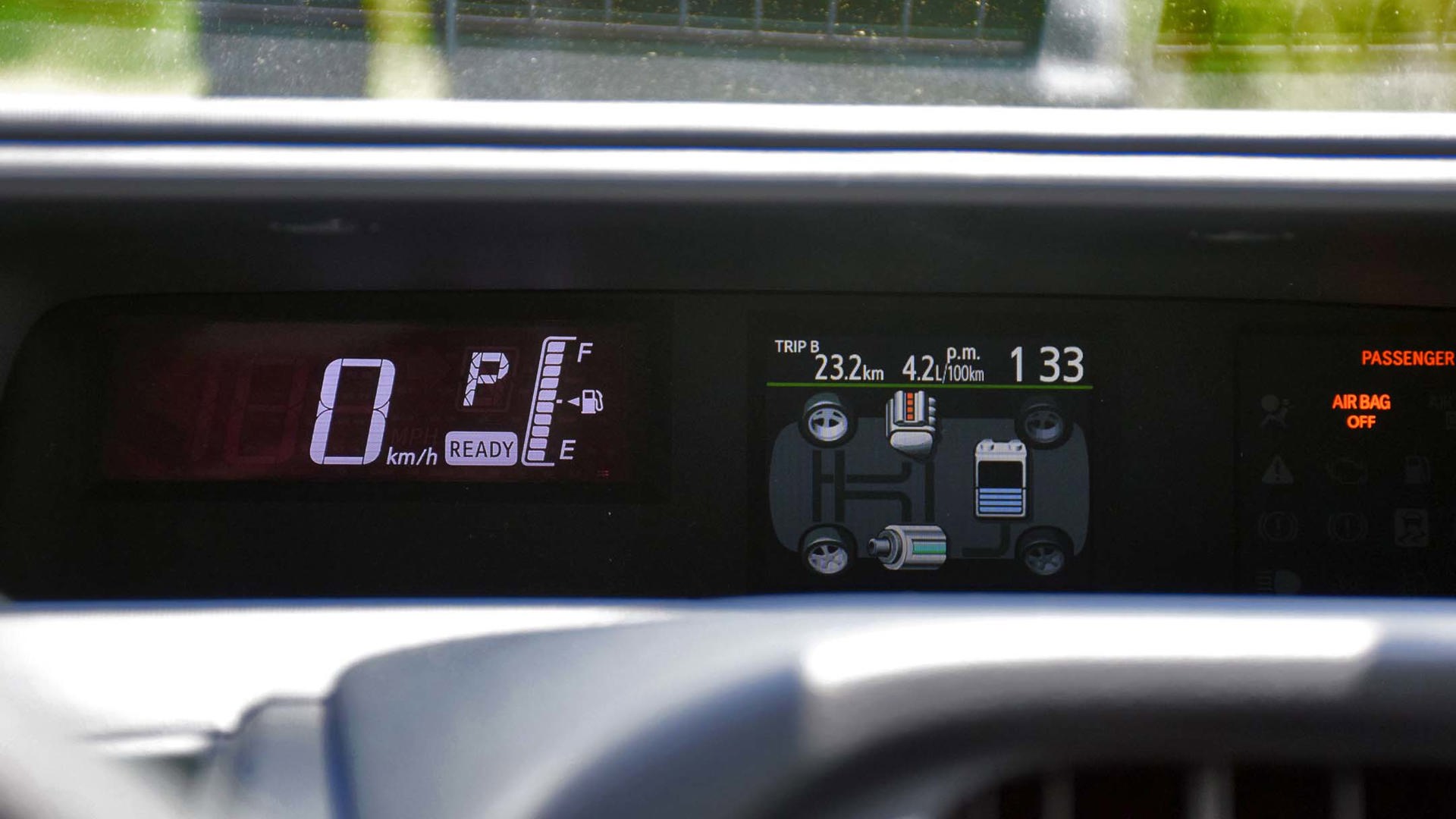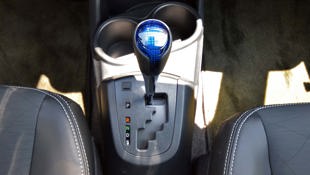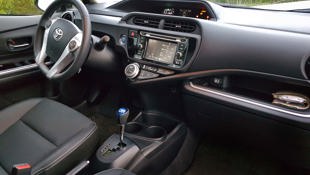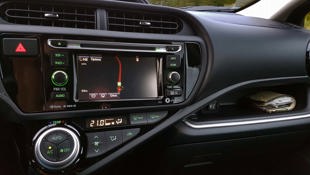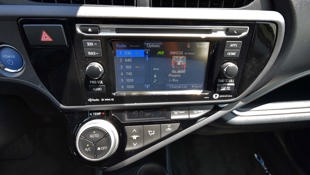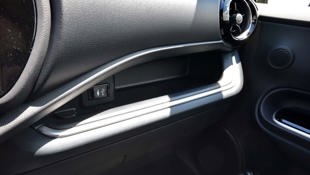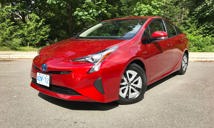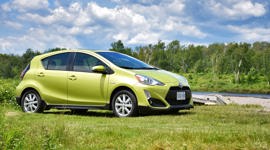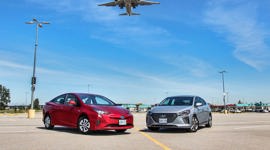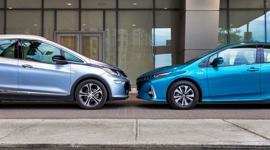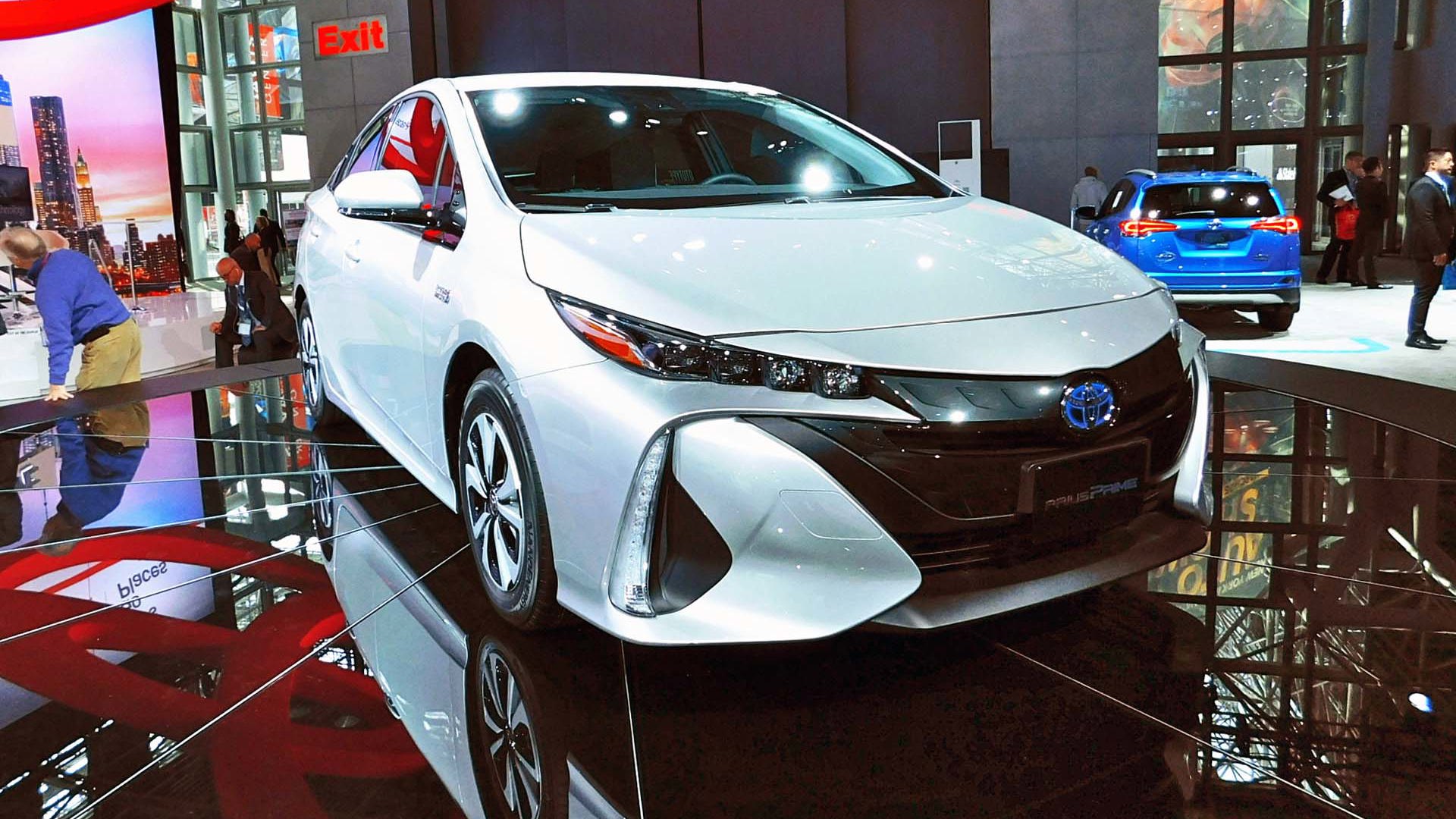 AutoTrader SCORE
AutoTrader SCORE
-
STYLING7/10
-
Safety8/10
-
PRACTICALITY8/10
-
USER-FRIENDLINESS8/10
-
FEATURES8/10
-
POWER8/10
-
COMFORT8/10
-
DRIVING FEEL9/10
-
FUEL ECONOMY9/10
-
VALUE7/10
The 2017 Toyota Prius is a collection of the most compelling attributes in a mid-sized car today. It’s comfortable, handles well, performs well, comes loaded with features and tech, and is hilariously easy on fuel. I left a test drive of the latest Prius impressed with how well the machine’s hybrid powertrain blends into the background, and figured it could convert many an apprehensive hybrid shopper on a test drive.
Here’s a machine honed for city driving in a busy, congested downtown core, and that shows up in several ways – most notable among them being the small footprint, shape, and manoeuvrability.
That Prius is just one member of a family of vehicles – which includes the larger and more flexible Prius v, and the subject of this story, the compact 2017 Toyota Prius c, which is the Prius’ baby brother.
Updated for 2017, Prius c pushes ahead with styling, tech, and safety, and is positioned as a compact car offering for the hybrid fan, a hybrid offering for the compact car fan, or as an ultra-thrifty second-car runabout for a busy family.
Prius c starts under $22,000 – some $5,000 less than the standard Prius, and nearly $7,000 less than the Prius v. This makes Prius c the entry Prius, and a gateway hybrid of sorts.
A few functional notables to start.
I found minimal issues with space, or entry and exit, and the tester offered up adequate or better leg and knee room at every seat. Rear-seat legroom with four average-sized adults on board is more than sufficient, and the rear-seat floor is hump-free, meaning more room for passenger feet. Note that rear seat headroom tightens up quickly for those of average or greater height, though and that the rear seats lack a center armrest.
The cargo space will accept a few small bags or luggage provisions, or a load of groceries and shopping, with ease – and when needed, seatbacks fold fully flat in a jiff to add more room. Rounding out the storage and flexibility are a substantial range of at-hand storage provisions, including a covered console storage bin, and numerous handy open cubbies within the driver’s reach. There’s even an open bin just behind the steering wheel, and a deep compartment above the glove-box on the passenger-side dash. So, Prius c is bigger on board than you may think, and very well suited to helping keep drivers and passengers organized on the move.
Fully loaded with the Technology package, the tested unit included heated leather, automatic climate control, navigation, an excellent high-resolution back-up camera, a touchscreen interface, push-button start, and more. Plus, as virtually all new Toyotas do, an advanced suite of safety features was included as standard under the Toyota Safety Sense-C system, with automatic high-beams, a pre-collision warning system, and lane-departure alert all installed as standard.
Here’s a machine honed for city driving in a busy, congested downtown core, and that shows up in several ways – most notable among them being the small footprint, shape, and manoeuvrability.
Prius c’s small size and gleefully tight turning circle means drivers can snipe any parking space they like without a second thought, and the excellent back-up camera makes for added confidence in tight-quarters manoeuvring. Outward visibility is more than adequate, with a low window line and properly shaped side mirrors allowing for easy monitoring of nearby traffic, pedestrians, and cyclists in a busy downtown setting. Further, the flexible cabin with a low load-in height aids with the quick and easy loading and unloading of gear, shopping, and pets.
There’s also the fuel mileage. Prius c is rated to use as little as 4.9 L/100 km of fuel, with the best mileage coming not during highway cruising, but during city driving, where the hybrid drive system is the most efficient.
Though many less-expensive small cars are thrifty, flexible and well suited for frequent use in tight quarters, the Prius c comes with the compelling promise of even less need for refueling stops. There’s even an “EV” drive mode, which allows the vehicle to be driven solely on electricity during short, low-speed trips. All electricity is generated on board, so there’s no plugging it in to recharge.
Ride quality is notable. Though your city roads may be in less-than-stellar shape, the Prius c feels solid and durable, and it takes a rough road to coax noise, flimsiness, or harshness from the suspension. Often, Prius c feels like a bigger, pricier car when badly broken pavement passes underfoot.
All said, if a city-friendly runabout tickles your fancy, and if that city-friendly runabout will be a hybrid, the Prius c makes a compelling choice, not to mention your only choice in a hybrid car this small.
Your writer lives in a different locale though: Sudbury, Ontario, has a downtown that’s relatively small, and not tremendously busy with traffic. Sudbury is big and spread-out place, so if you’re going anywhere, including to another city or town nearby, you’re likely to be spending a good bit of time on the open highway.
And here, the Prius c is a mixed bag.
Let’s start with the good news. Steering is heavy enough to help Toyota’s littlest hybrid lock nicely onto its line with stability, so it doesn’t feel light and darty, even up to and beyond the speed limit. Side winds and passing transport trucks do little to push it around. Further, noise levels are kept in check up to, and slightly beyond, 100 km/h, where there’s minimal voice-raising required for a conversation. Headlights were better than expected in a city-oriented car, with LED elements casting clean white light, far and wide up dark highways, and into nearby culverts and treelines.
Finally, brakes operate with higher precision than the norm for a hybrid, and they’re powerful enough to pull the Prius c down from speed quickly and confidently.
The bad news? When it’s time to accelerate back up to speed, the Prius c’s 99 combined horsepower is adequate and little more. Mileage, not performance, is this machine’s specialty – and if you’re considering one, chances are you’re a laid-back, light-footed driver who isn’t typically in a rush. If that sounds like you, the Prius c will feel just fine, though heavier footed-drivers, or those coming to a Prius c from a more powerful car, will need to learn a measure of forward-looking anticipation and patience for passing and merging.
With 0–60 taking about 11 seconds, both the Toyota Yaris and Nissan Micra would leave the Prius c in the dust.
Further, though the tester was comfortably capable of cruising at virtually any speed requested, the 1.5-litre engine’s sound becomes increasingly present as speeds increase, and even more so while climbing hills, where the smooth and shift-less CVT transmission gently glides the revs up to keep things steaming along.
Mileage, as expected, impressed. On my watch, the tester put away just 5.3 L/100 km – and virtually every one of our 1,200 kilometres together was spent on the highway, not in the city, where the tester claims the best fuel efficiency. That’s about 2 L/100 km better than a Nissan Versa Note, driven in similar conditions and situations.
Gripes? Tight rear headroom aside, rear-seat passengers frequently wished for a centre armrest, and some of the controls and switches are installed in awkward places, as though they were added in as an afterthought.
One final note. Your writer is a heavy-footed, high-stress driver whose typical daily routine pans out like a to-do list of tasks that take place at various locations. As such, I often find myself driving in a rush, where driving simply takes me from one task to the next, without helping to actually complete said task. Result? When driving around town, I’m often a little anxious and stressed.
The Prius c changed this – it’s a machine that encourages you effectively, through its onscreen displays and promise of great mileage, to just relax and enjoy the ride. To get into the slow lane, to accelerate gently, and to just chill out. You don’t feel quite as rushed and hurried when driving a car like this one, partly because it’s not expert at rushing around, and mostly, because you quickly learn that driving gently maximizes your return on investment in the hybrid driveline.
All said, here’s a unique, surprisingly roomy and very thrifty little car that might just be the ideal runabout for a family after a miserly second ride, or a city-dweller after something that’s easy to park, easy to live with, and easy to drive right past the gas station with. It’s a machine perfect for a relaxed driver – and a machine that might turn you into one, if you aren’t already.
And, when needed, it’ll play ball as a highway cruiser, too.
| Engine Displacement | 1.5L |
|---|---|
| Engine Cylinders | 4 + electric motor |
| Peak Horsepower | 99 hp @ 4,800 rpm |
| Peak Torque | 82 lb-ft @ 4,000 rpm |
| Fuel Economy | 4.9/5.5/5.1 L/100 km city/hwy/cmb |
| Cargo Space | 484 L |
| Model Tested | 2017 Toyota Prius c Technology |
| Base Price | $26,980 |
| A/C Tax | $100 |
| Destination Fee | $1,715 |
| Price as Tested | $28,795 |
|
Optional Equipment
None
|
|
